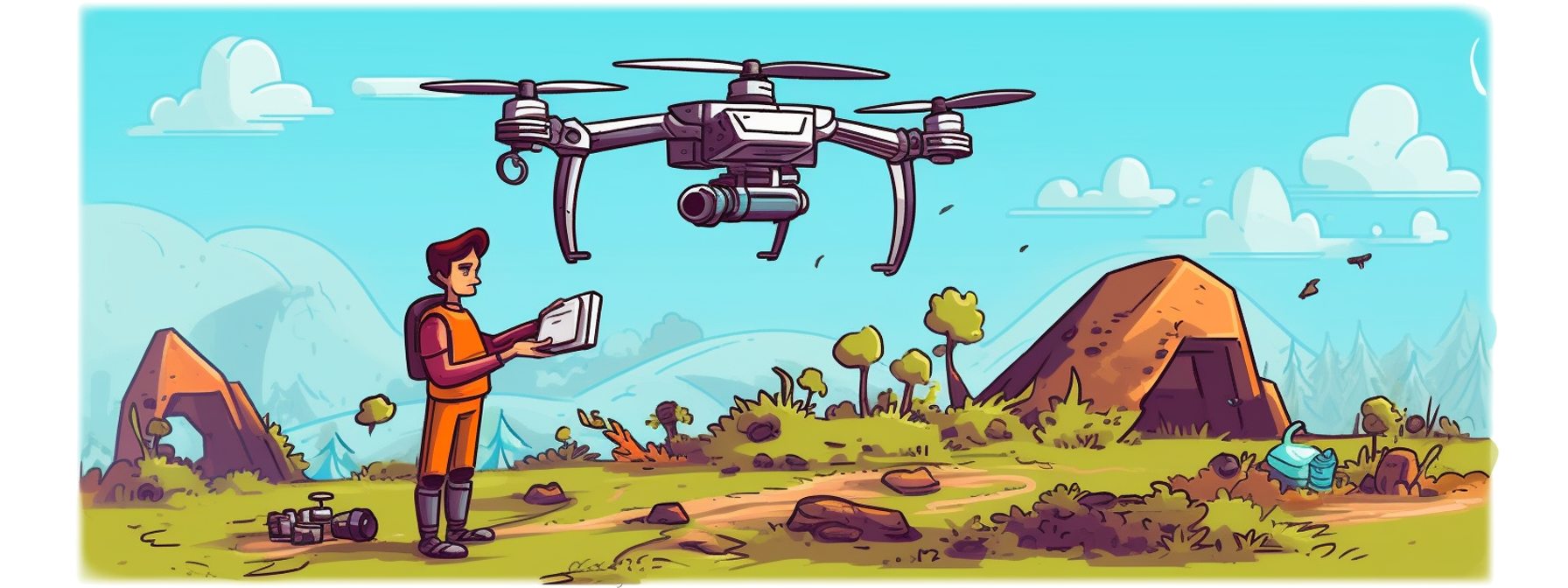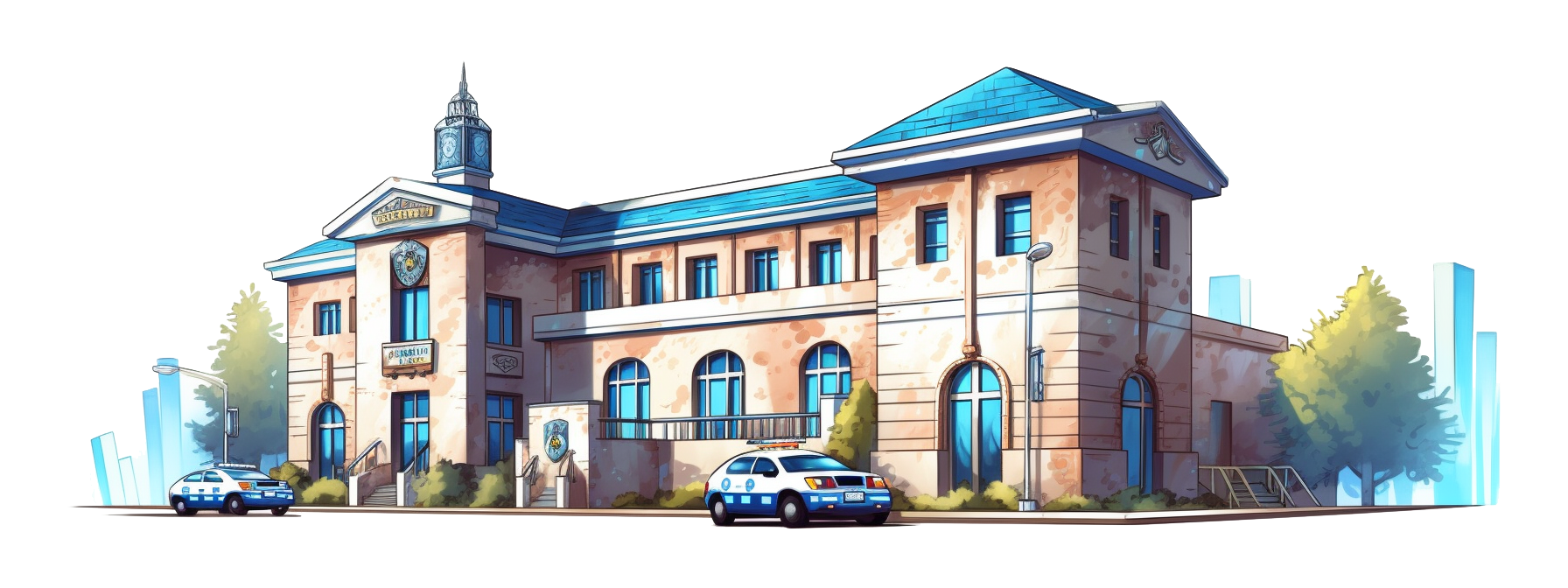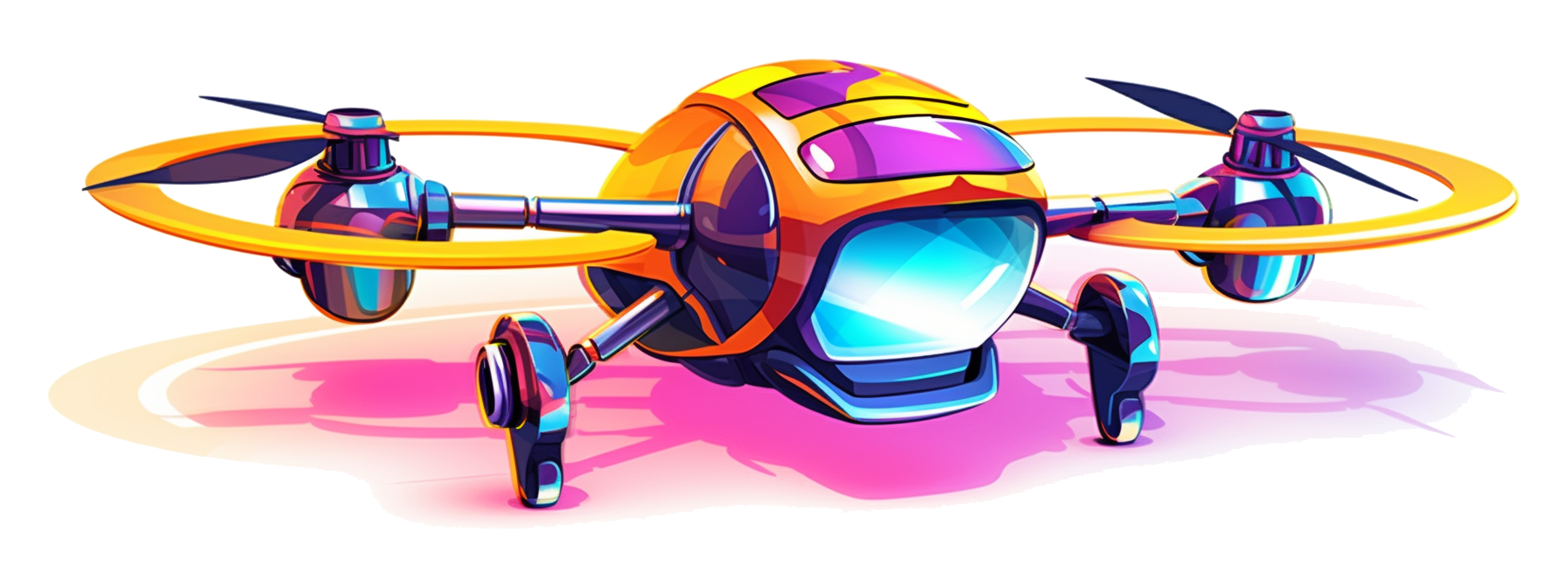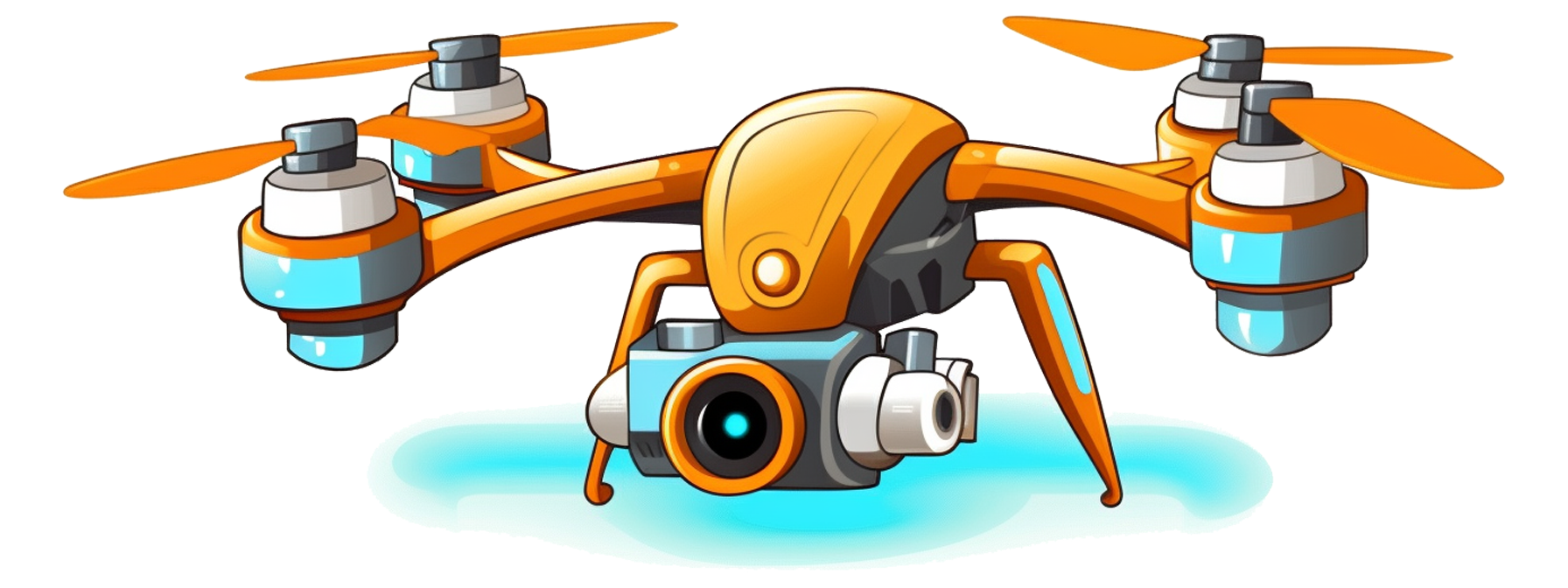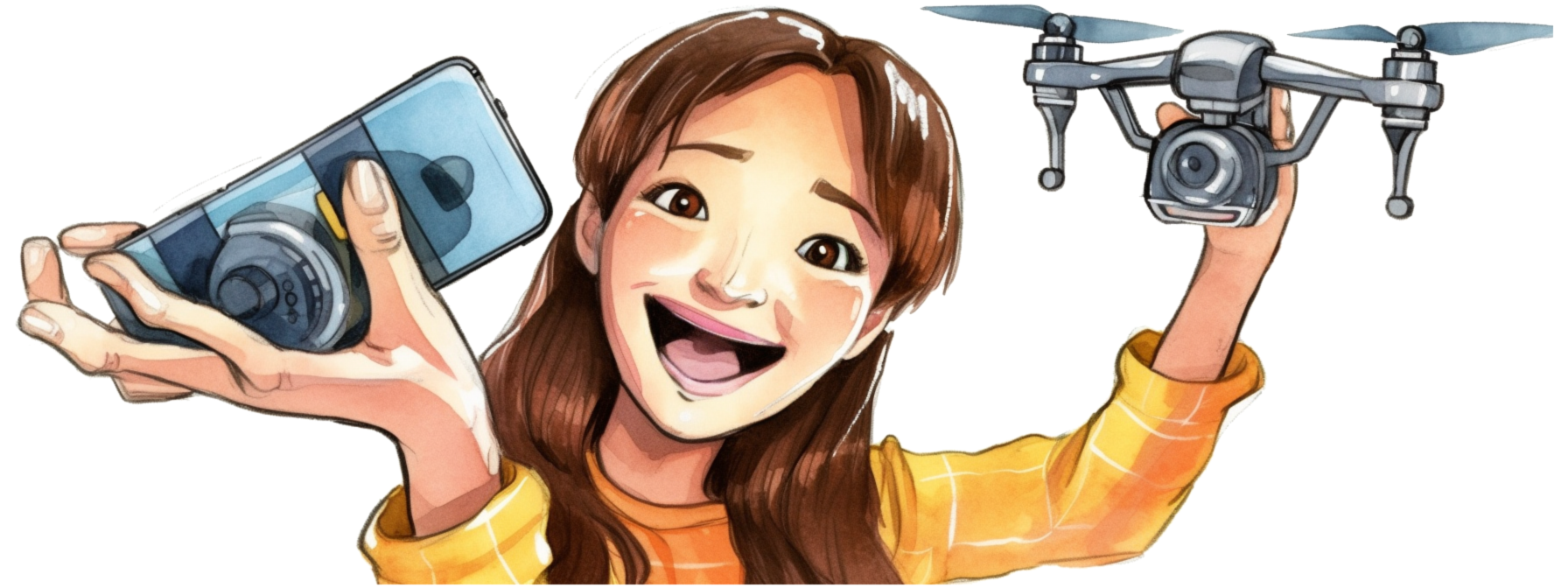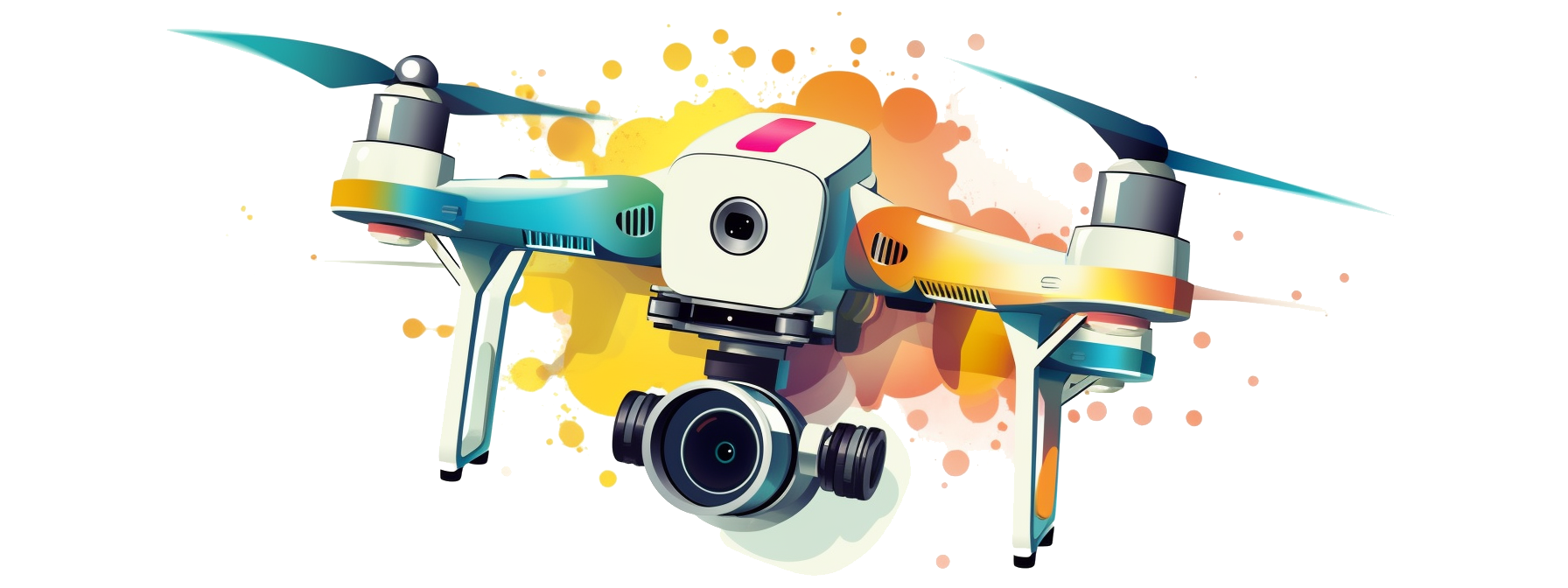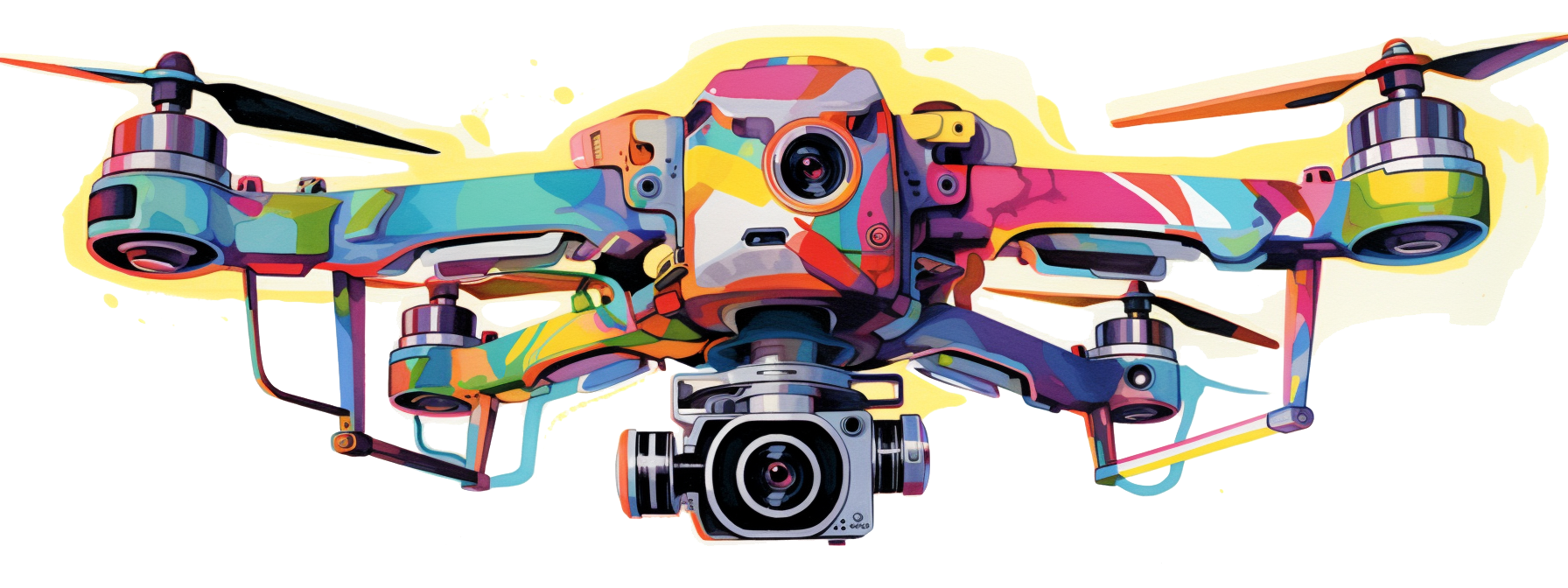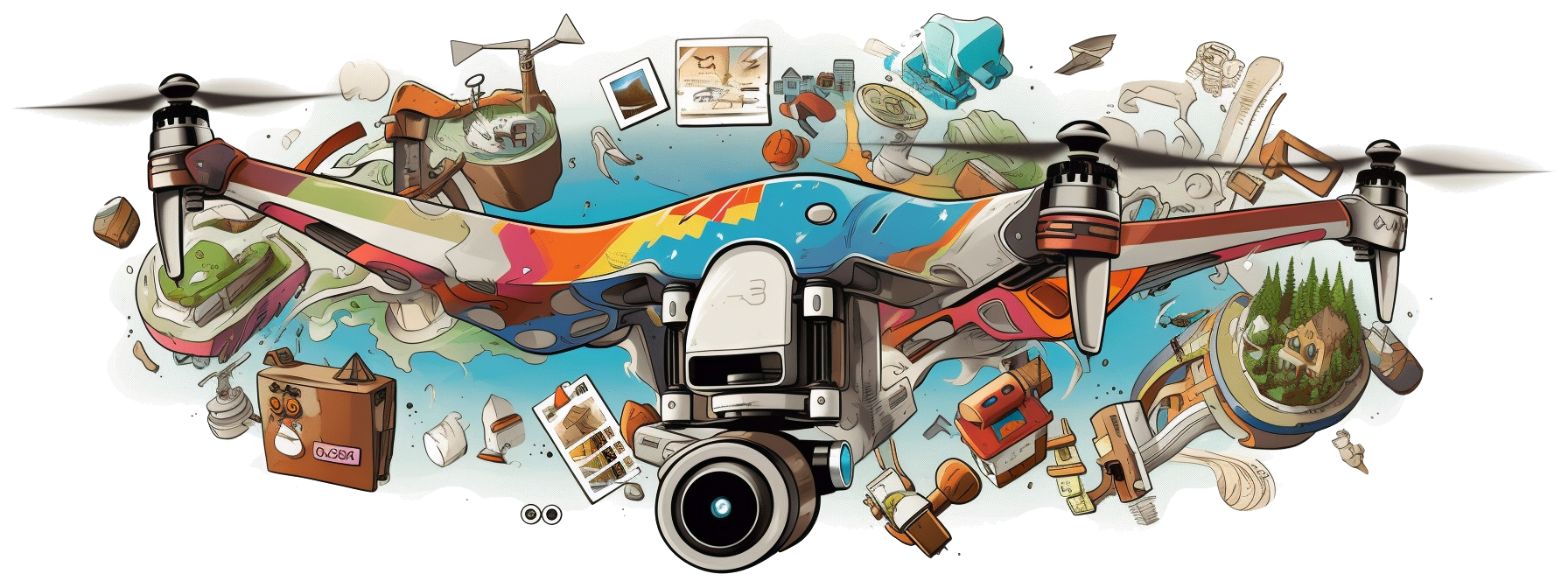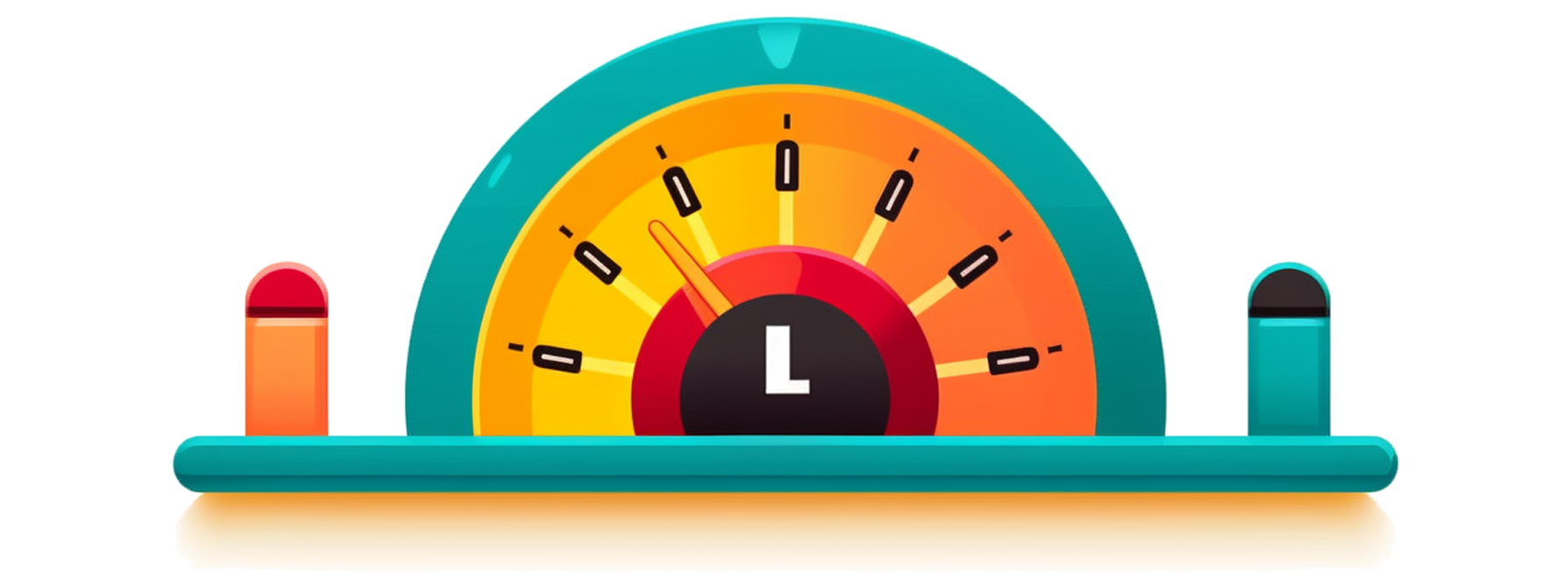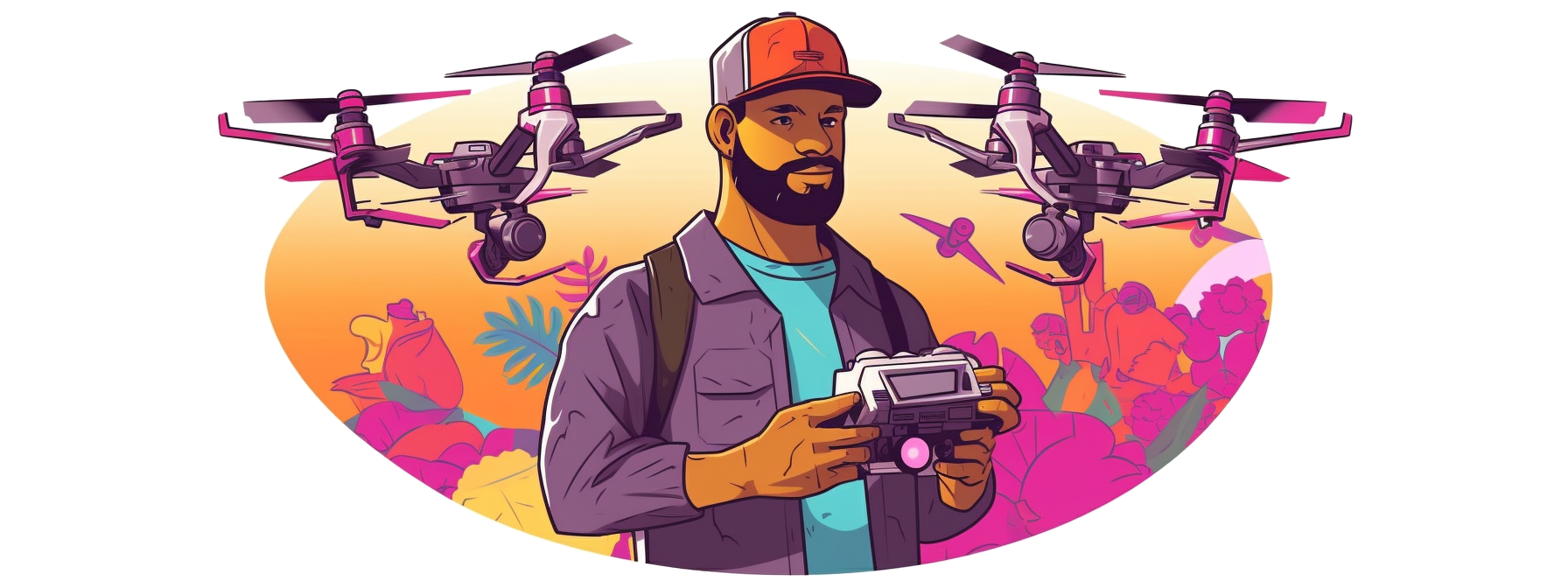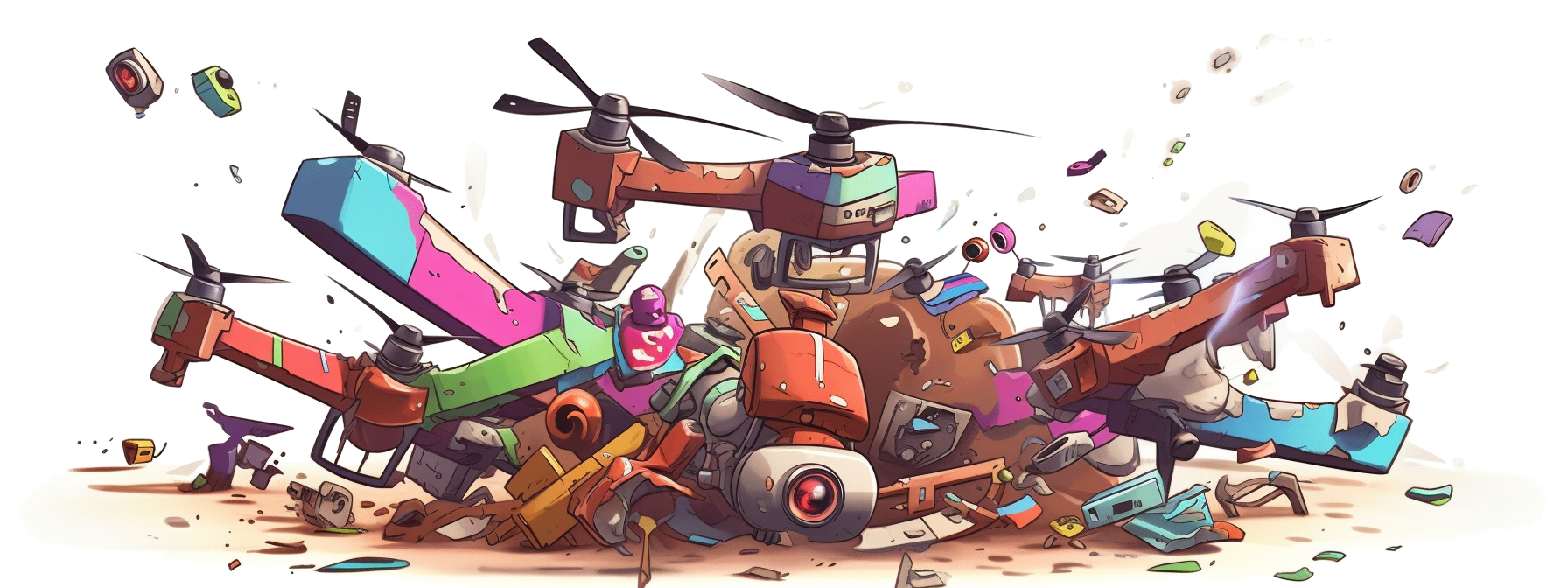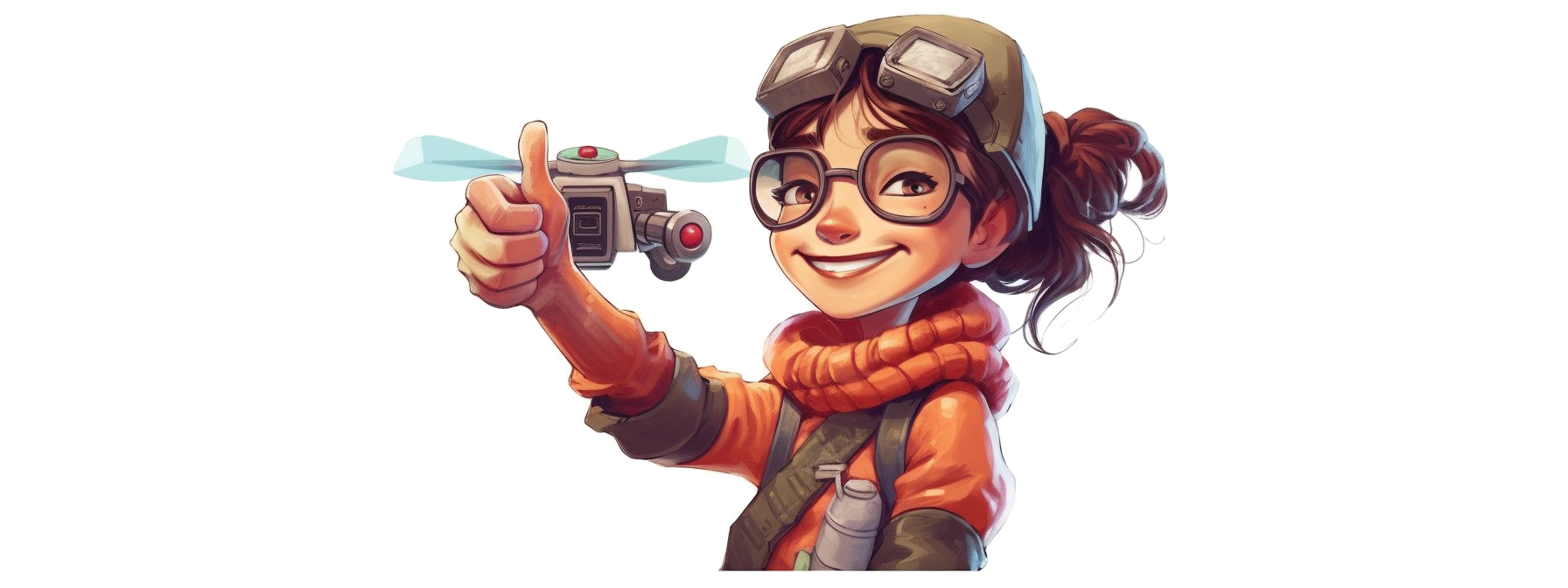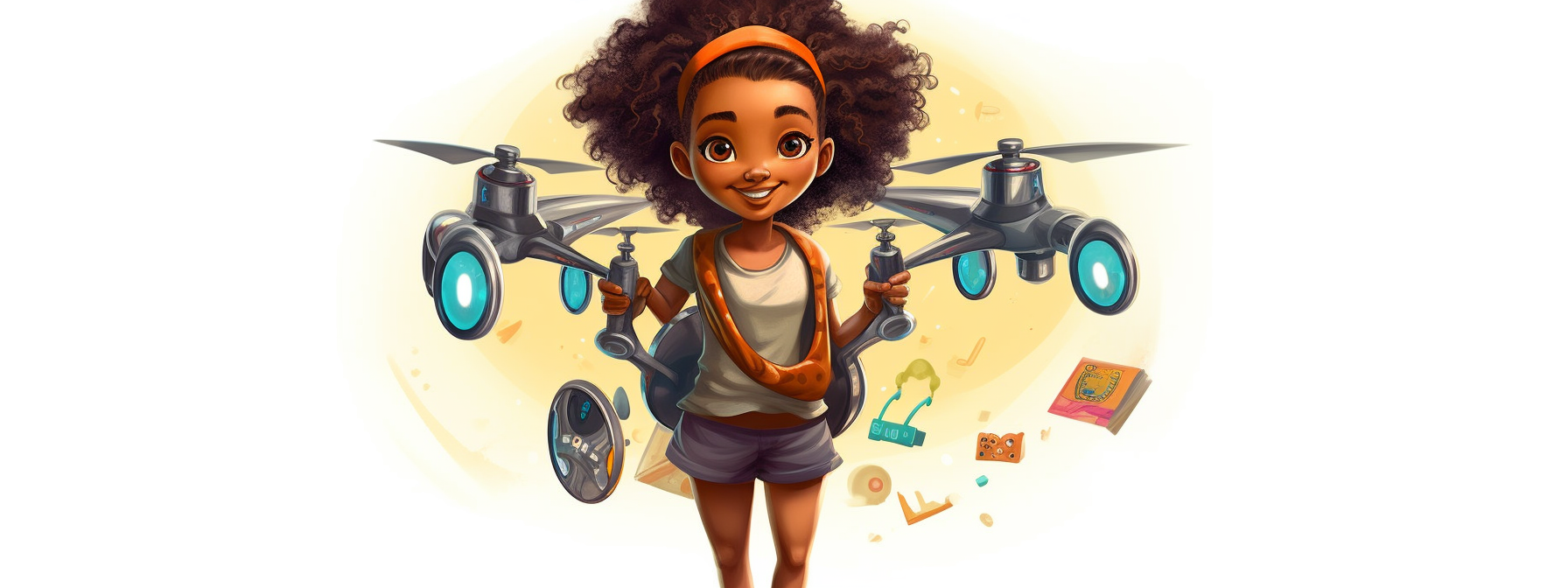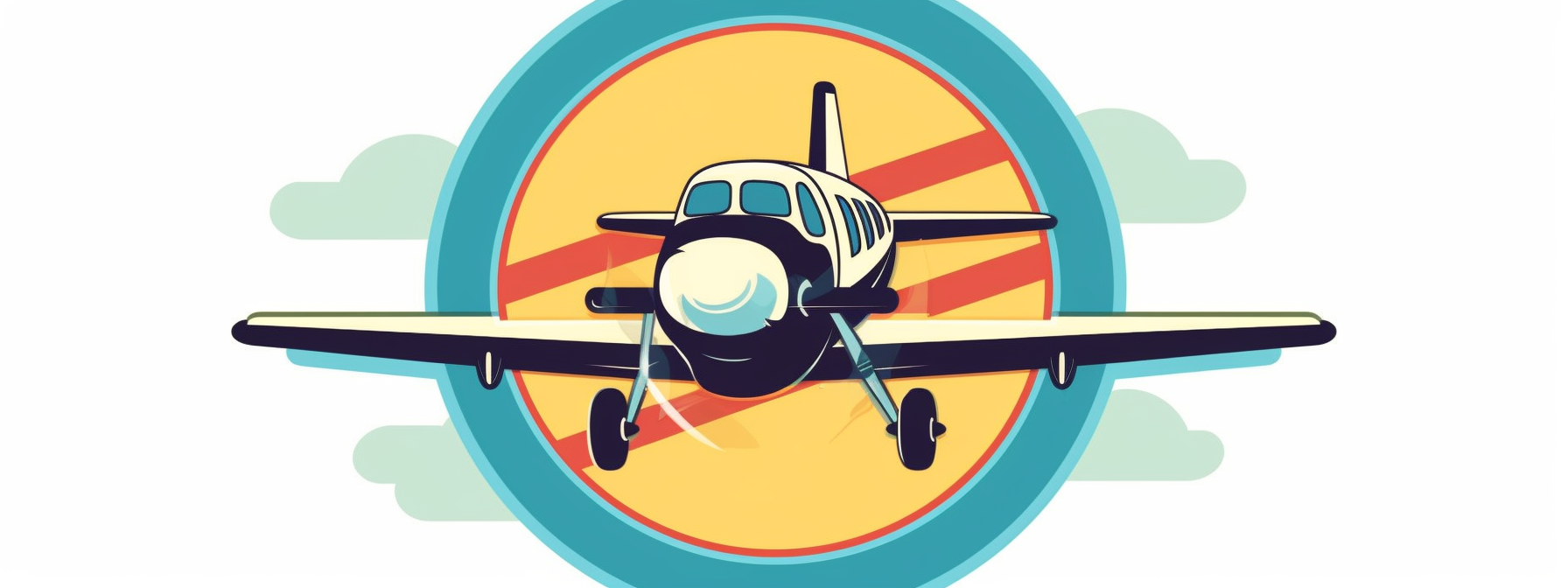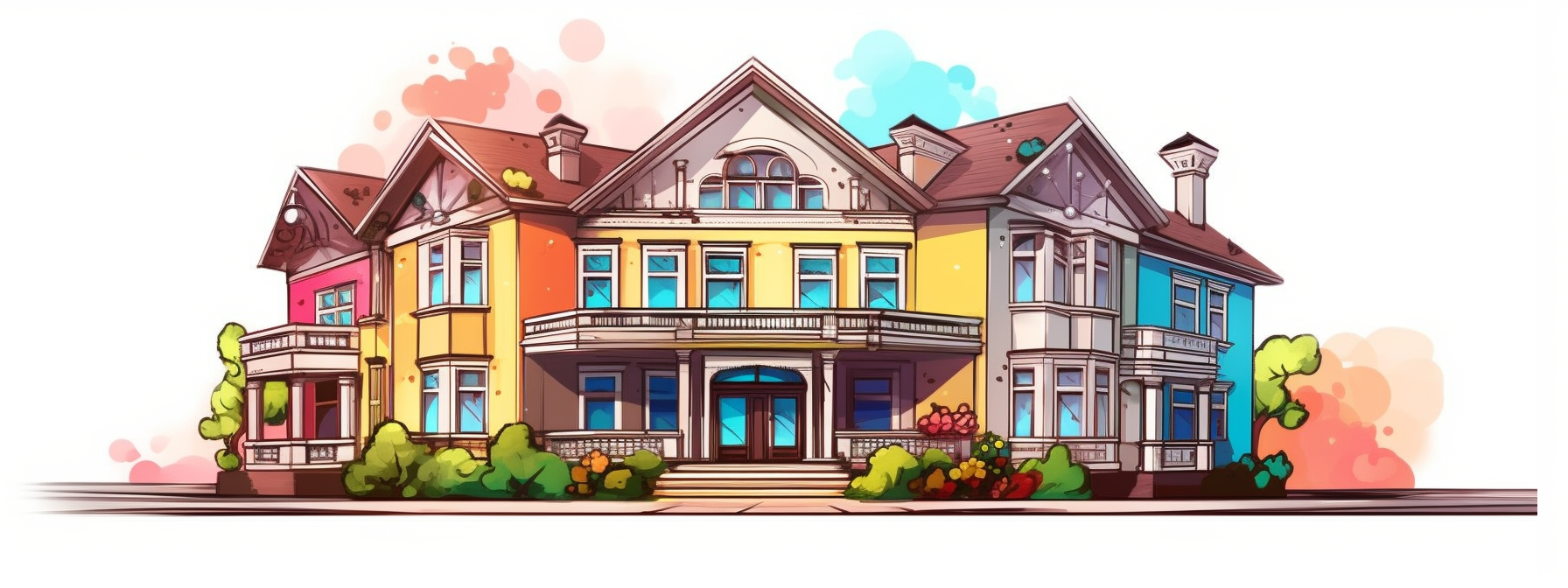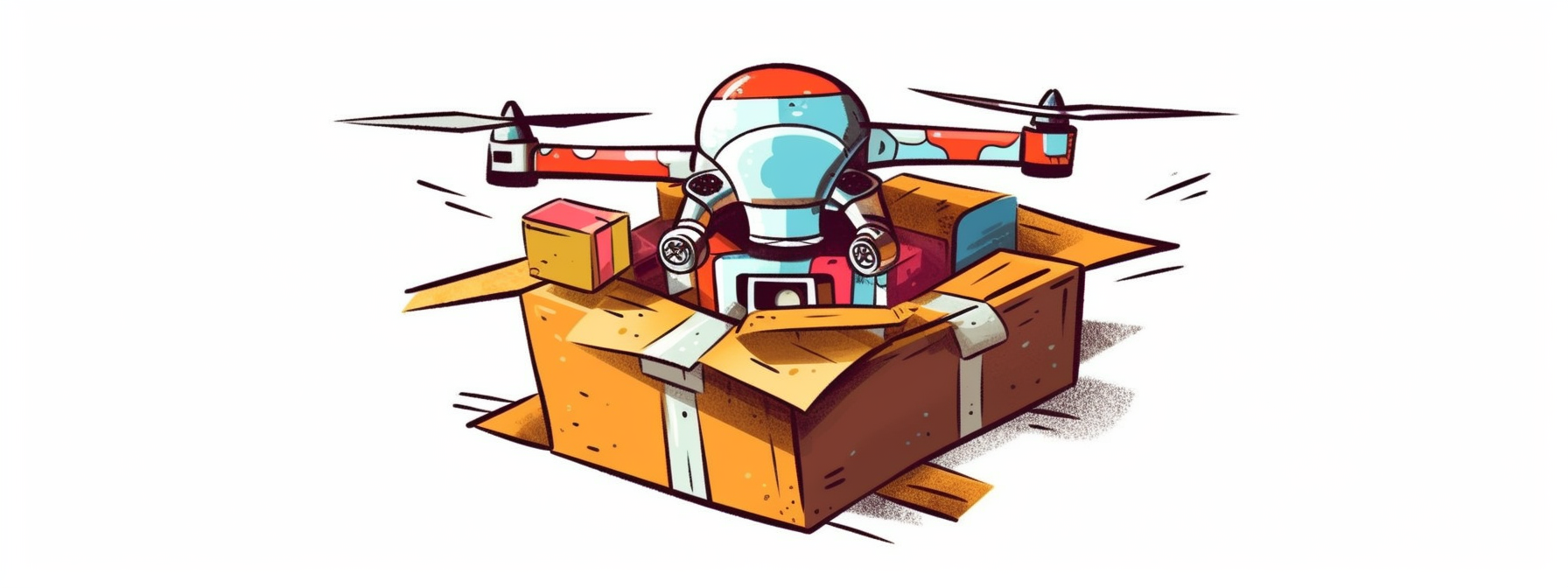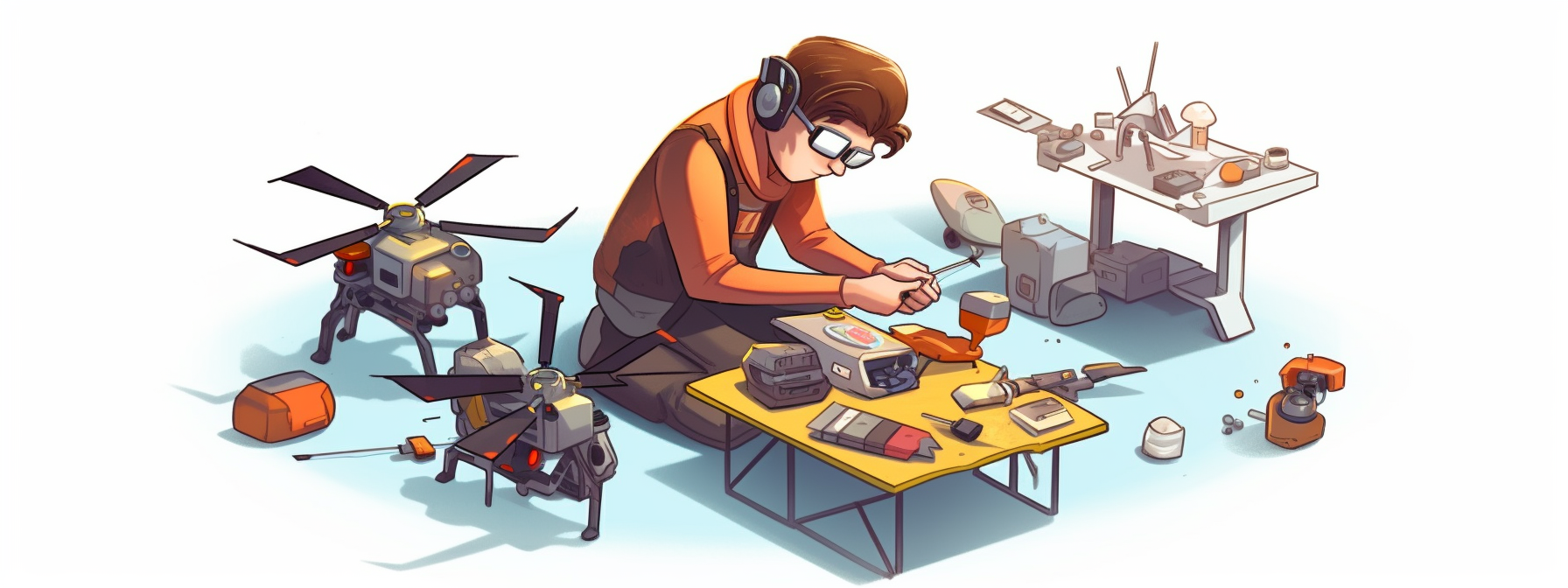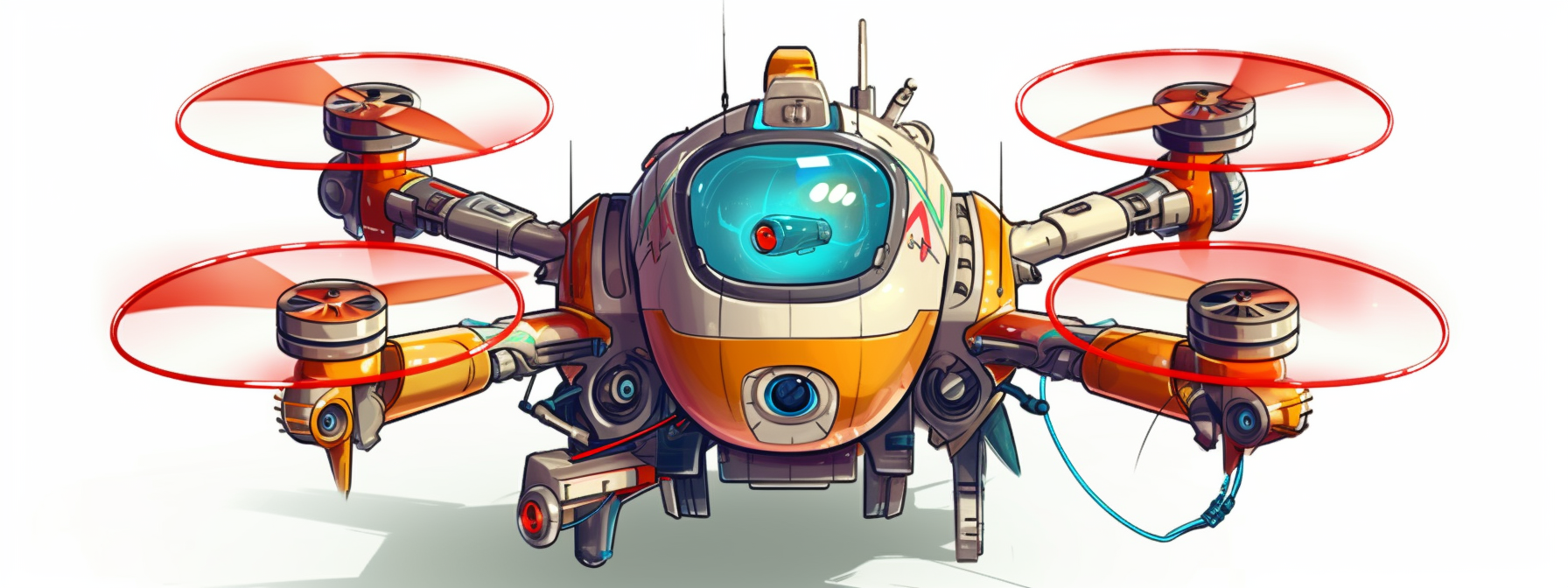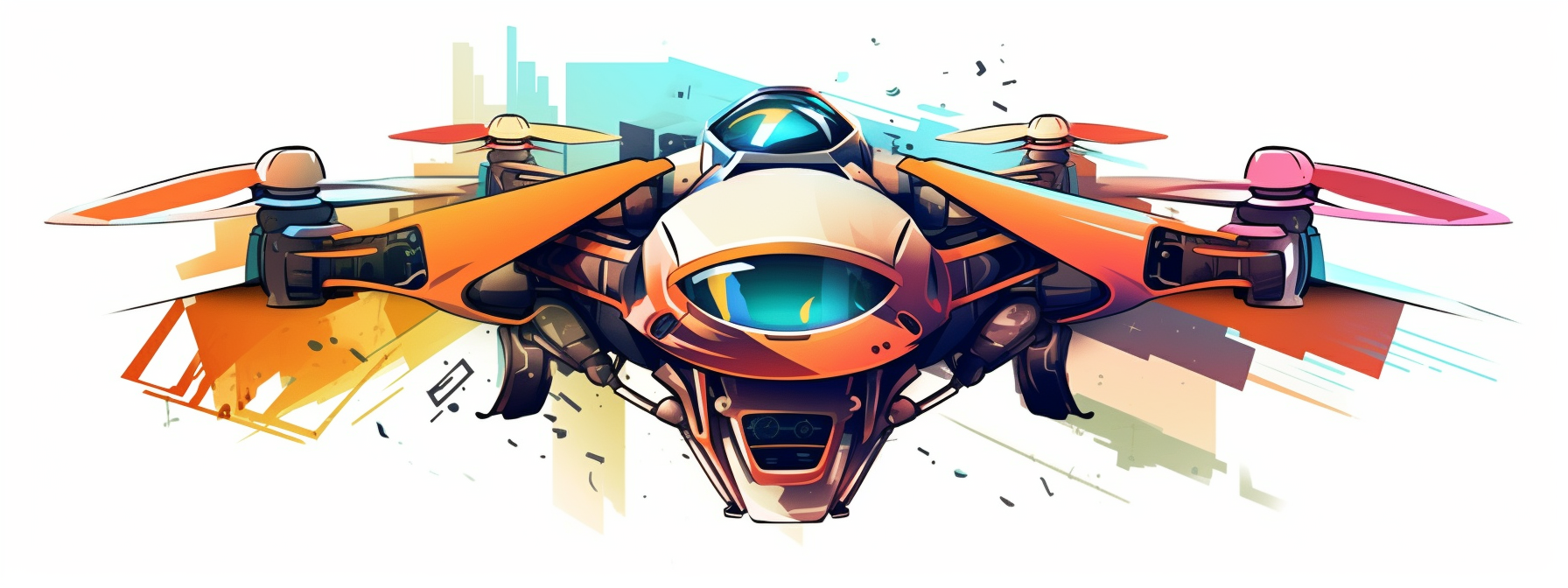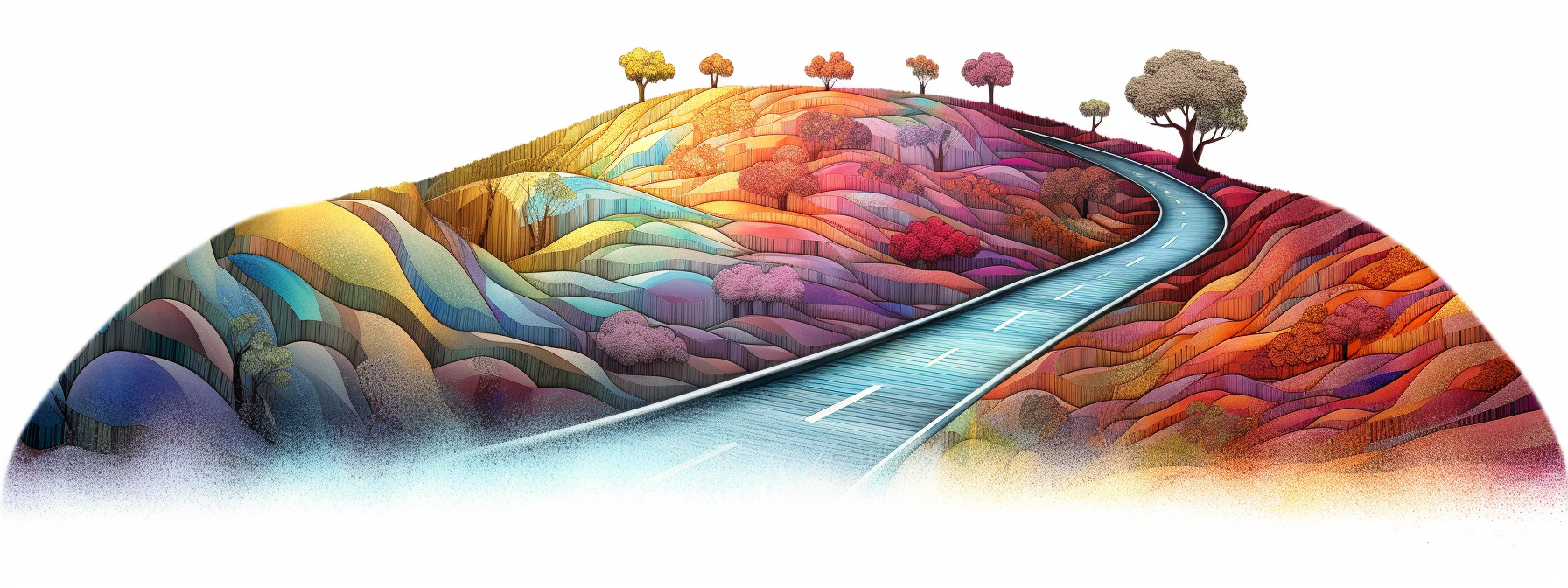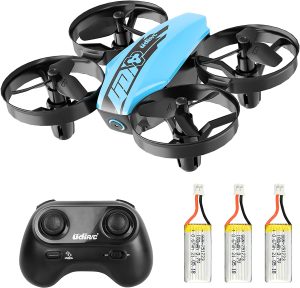Welcome to our comprehensive Drone Buyer’s Guide, the one-stop resource tailored to help you navigate the rapidly evolving world of drones, whether you’re an aerial photography enthusiast, a racing drone adrenaline junkie, or a professional surveyor.
Over the past decade, drones have gone from niche gadgets to mainstream technology. The market is now brimming with options, from mini and nano drones perfect for indoor fun to professional camera drones like the DJI Inspire 2, known for its ability to capture stunning 6K cinemaDNG raw video. With so much to choose from, finding the perfect drone for your needs can feel like finding a needle in a technological haystack.
That’s where our Drone Buyer’s Guide comes in. We’ve broken down the complicated world of drones into digestible sections, each focusing on a different aspect of drone technology and use.
In this guide, we’ll uncover everything from understanding your needs and budget considerations to diving into the nitty-gritty details of drone technology. We’ll explore the different types of drones, including hobby drones, selfie drones, FPV/racing drones, and professional camera drones.
We’ll also take a deep dive into key drone technologies, unraveling the mysteries of GPS, gyroscopes, accelerometers, and camera quality. You’ll get a handle on critical drone terminology to help you communicate like a pro, whether you’re discussing UAV, UAS, or the difference between RTF, BNF, and ARF drones.
We’ll also shed light on important factors like legal restrictions and considerations that will impact your drone use, and guide you toward responsible drone use.
The landscape of the drone market is as vast as the skies in which these devices soar, and our goal is to equip you with the knowledge to navigate it with confidence. Whether you’re a first-time drone buyer or looking to upgrade, this guide is here to help you every step of the way. Let’s embark on this journey together as we take off into the exciting world of drones!
- Introduction to Consumer Drones
- Determining Your Drone Needs
- hobby, photography, racing, etc.
- Budget considerations
- Legal restrictions and considerations
- Types of Consumer Drones
- Key Factors to Consider When Buying a Drone
- GPS, gyroscope, accelerometer, camera quality, etc.
- Flight time and battery life
- Range and control options
- beginner, intermediate, advanced
- obstacle detection and avoidance, return home function, etc.
- In-depth Drone Reviews
- Understanding Drone Regulations
- Registration requirements
- height restrictions, no-fly zones, etc.
- Privacy considerations
- Drone Maintenance and Upkeep
- Exploring the Future of Consumer Drones
- Conclusion and Final Thoughts
Basic Terminology and Types of Drones
When you enter the world of drones, you’re likely to encounter a whole new lexicon of terms and acronyms. In addition, the vast array of drone types can be somewhat overwhelming. This chapter aims to simplify this complexity and provide you with a solid understanding to make an informed purchase.
Essential Drone Terminology
1. UAV & UAS: These acronyms stand for Unmanned Aerial Vehicle and Unmanned Aircraft System, respectively. They’re the technical terms for what we commonly refer to as “drones.”
2. Quadcopter: A type of drone with four rotors or propellers. Most consumer drones like the DJI Mavic Air 2, which has a flight time of up to 34 minutes and a 10km maximum video transmission range, are quadcopters.
3. FPV: First Person View refers to a piloting method where operators fly drones remotely using a live feed from an onboard camera.
4. RTF, BNF, and ARF: Ready-To-Fly (RTF), Bind-N-Fly (BNF), and Almost-Ready-To-Fly (ARF) are terms indicating how ready a drone is for use straight out of the box.
5. Gimbal: A mechanical stabilization system that allows you to rotate cameras on a drone, like the 3-axis gimbal found on the DJI Phantom 4 Pro V2.0.
6. Payload: The additional weight (excluding the drone’s own weight) that a drone can carry, usually referring to cameras or other equipment.
Common Types of Drones
1. Multi-Rotor Drones: These are the most common types of drones, with quadcopters being the most popular subtype. They are ideal for aerial photography, inspections, and surveillance.
2. Fixed-Wing Drones: Resembling miniature airplanes, these drones are designed for long-range flights and can stay airborne for hours. However, they’re generally more expensive and require more training to operate.
3. Single Rotor Helicopters: These drones offer improved efficiency and flight times over multi-rotor drones, but they’re more challenging to control.
4. Hybrid VTOL Drones: Vertical Take-Off and Landing drones combine the benefits of fixed-wing and multi-rotor drones. They can hover in place and fly long distances.
Deciphering drone terminology and understanding the different types of drones are crucial steps in your drone buying journey. A solid understanding of these aspects will allow you to better match your needs with the capabilities of different drones, ensuring that you find the perfect fit for your aerial adventures. Remember, every pilot’s journey starts on the ground, with a good understanding of the basics.
Brief History of Consumer Drones
Drones, those modern flying marvels that effortlessly grace our skies, may seem like a recent phenomenon. But their history is more intertwined with our past than you might think.
The Early Beginnings
The concept of unmanned aerial vehicles isn’t as new as it might seem. In fact, the roots of drone technology can be traced back to the 19th century, with the advent of balloon carriers used to deliver mail during the Franco-Prussian War of 1870.
The 20th century saw further exploration of unmanned flight. In particular, during World War I, the U.S. developed the Kettering Bug, an unmanned biplane, albeit with limited success. Meanwhile, World War II saw the emergence of various radio-controlled aircraft for military applications.
Rise of Modern Drones
But the drones we know and love today, the quadcopters, began their rise to popularity in the early 21st century. They were initially developed for military and professional purposes, with General Atomics’ MQ-1 Predator drone becoming a household name during the Iraq and Afghanistan wars.
However, it was the advent of miniaturization of technology and falling production costs that opened the doors for consumer drones. In this era, drones became smaller, lighter, and more affordable, making them accessible to the general public.
The Drone Revolution
In 2006, the landscape of drone technology changed dramatically when the FAA issued the first commercial drone certificate. But the real turning point came in 2010 with the launch of the Parrot AR Drone, one of the first consumer-friendly drones that could be controlled by a smartphone.
Fast forward to 2013, and DJI – a name now synonymous with consumer drones – released the Phantom. This drone, with its advanced features, high-quality camera, and relative affordability, truly brought drone technology to the mainstream market.
Today’s Drone Market
Today, the consumer drone market is buzzing with a variety of options to suit different needs and budgets. From mini drones for beginners to high-performance racing drones to professional camera drones, there’s something for everyone.
But it’s not all fun and games. Drones have found practical applications in industries as diverse as real estate, agriculture, surveying, and emergency services. They have truly redefined the way we see and interact with the world around us.
As we look to the future, we can only expect more advancements in drone technology, with improvements in aspects such as flight time, range, AI capabilities, and more. As consumers, we are just at the beginning of this exciting journey.
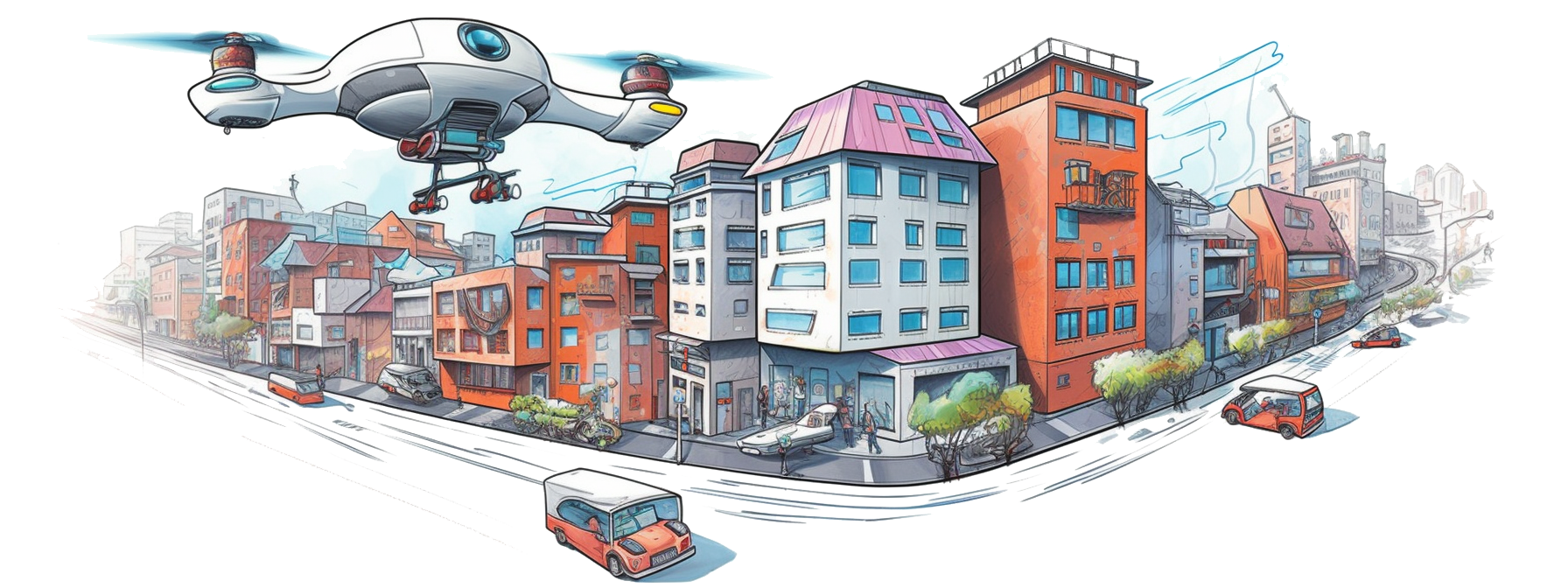
The Role and Impact of Drones in Today’s Society
Once associated primarily with military operations or hobbyist activities, drones have transcended these boundaries to become influential players in various sectors of today’s society. Their versatility, coupled with advances in technology, has led to a paradigm shift in how tasks are performed in various fields. Let’s take a closer look at the role and impact of drones in today’s world.
Revolutionizing Photography and Videography
One of the most prominent uses of drones today is in photography and videography. Drones equipped with high-resolution cameras have changed the landscape, making aerial photography and cinematography accessible to professionals and hobbyists alike. Whether it’s capturing breathtaking landscapes, filming action sports from unique angles, or creating immersive real estate tours, drones have expanded the horizons of visual storytelling.
Enabling Efficient Delivery Services
The concept of drone delivery, once a science fiction dream, is beginning to become a reality. Companies such as Amazon and Alphabet are testing drone delivery systems that promise to be fast, efficient, and environmentally friendly alternatives to traditional delivery methods. While there are still regulatory hurdles to overcome, it’s clear that drones have significant potential to revolutionize e-commerce and logistics.
Enhancing Public Safety and Emergency Responses
Drones are playing an increasingly important role in public safety and emergency services. Firefighters and rescue teams use drones for tasks such as surveying wildfire zones, searching for missing persons, or delivering medical supplies to inaccessible areas. By providing real-time visuals and reaching places humans can’t, drones are proving to be invaluable tools in saving lives and resources.
Contributing to Scientific Research and Conservation
In the scientific community, drones have become a critical tool for environmental monitoring and wildlife conservation. Researchers use drones to track animal migrations, monitor deforestation, and even collect whale blowholes for health assessments. By providing a safer, more cost-effective method of data collection, drones are helping to preserve our planet.
Driving Industrial and Agricultural Innovations
In industries such as construction and agriculture, drones are driving efficiency and productivity. In construction, drones are used for site surveys, inspections, and progress monitoring, reducing human error and improving safety. In agriculture, sensor-equipped drones can analyze soil health, monitor crop growth, and even assist in precision farming to optimize yields and resources.
Drones have undeniably carved out an important place in our society, and their role is only expanding as technology advances. They are not just flying gadgets; they are transformative tools that are reshaping industries, hobbies, and professions.
Understanding Your Requirements: Hobby, Photography, Racing, Etc.
Before you dive into the fascinating world of drones, it’s important to understand exactly what you need from these high-flying machines. The market is filled with a variety of drones, each designed with specific capabilities to meet different needs. Whether you’re a hobbyist, photographer, racer, or professional, there’s a drone out there for you. Let’s navigate through the nuances of each requirement:
Hobby Drones
If you’re primarily interested in the thrill of flight or looking for a new tech gadget to play with, hobby drones are your best bet. These drones often come with intuitive controls and modest features, making them a perfect starting point for beginners.
Consider the Ryze Tech Tello, which has a flight time of 13 minutes and a range of 100 meters. It’s lightweight (only 80 grams), easy to use, and can perform tricks like flips and spins, making it a perfect choice for hobbyists.
Photography Drones
For photography enthusiasts and professionals, a drone with a high-quality camera is essential. These drones come with features like gimbal stabilization, high-resolution photo and video capabilities, and advanced flight modes for better aerial footage.
An excellent choice in this category is the DJI Mavic 2 Pro. It has a 20-megapixel camera with a 1-inch CMOS sensor and adjustable aperture. With a 31-minute flight time, an 8-km range, and features like hyperlapse and panoramic shots, it’s designed to meet your creative needs.
Racing Drones
Speed, agility, and durability are key for racing drones. They’re typically compact, lightweight, and equipped with FPV (First Person View) capabilities for a thrilling, high-speed experience.
The Walkera F210 3D is a remarkable racing drone. It has a top speed of 80 km/h and uses advanced algorithms to perform exciting aerobatic maneuvers. It’s built to withstand the crashes that are common in drone racing.
Professional Drones
For industries such as real estate, agriculture and cinematography, professional drones offer advanced capabilities such as longer flight times, greater ranges and more sophisticated imaging technologies.
The DJI Matrice 300 RTK is a standout in this category. It has a remarkable flight time of 55 minutes, a range of 15 km and comes with advanced AI capabilities. It supports up to 3 payloads and 6 Directional Sensing & Positioning, making it extremely versatile for various professional applications.
By identifying your specific needs and understanding the capabilities of different drone categories, you can ensure that your drone purchase fits your needs perfectly. Remember, the sky isn’t just the limit – it’s your playground.
Budget Considerations
When it comes to buying a drone, budget is a key consideration. The price of drones can range from as little as $50 to well over $3000. But it’s not just the upfront cost. Additional expenses like batteries, propellers, camera upgrades, and maintenance can add up. Let’s take a look at what you can expect at different price points:
Budget Drones ($50 – $200)
In this price range, you can find basic drones suitable for beginners and hobbyists. These drones often come with basic features like simple controls, decent flight time, and sometimes even cameras. One such model is the Holy Stone HS170 Predator Mini RC Helicopter Drone, which has a flight time of 6-8 minutes and a range of about 50-100 meters. It’s a small, lightweight drone (14.4 ounces), perfect for beginners.
Mid-Range Drones ($200 – $1000)
Mid-range drones are a significant step up from budget models, offering better cameras, longer flight times, and more advanced features. For example, the DJI Mini 2 is a popular mid-range drone with a 4K camera, 31 minutes of flight time and a range of up to 10 km. It weighs just 249 grams, so it does not require FAA certification in many countries.
High-End Drones ($1000 and above)
High-end drones are professional-grade machines with advanced features, exceptional cameras, and long-range capabilities. For example, the DJI Inspire 2 is a high-end drone that offers up to 27 minutes of flight time, a 7 km range, and supports a range of professional camera options.
Additional Costs
Don’t forget to factor in additional costs. Extra batteries are a good investment because they extend your flight time. Depending on the model, drone batteries can cost anywhere from $20 to $150 each.
Replacement propellers are another cost to consider. Crashes do happen, and often the propellers take the brunt of the impact. A set of replacement propellers can cost between $5 and $50, depending on the drone model.
Camera upgrades for photography drones can be a significant cost, ranging from a few hundred to several thousand dollars.
Finally, maintenance costs can vary widely depending on how often you fly, how well you care for your drone, and a little bit of luck.
Understanding your budget and considering both upfront and long-term costs will help you choose a drone that won’t break the bank.
Legal Restrictions and Considerations
The world of drones is not just about endless fun and breathtaking aerial footage. It’s also about understanding and complying with the laws that govern their use. Legal restrictions vary by country, and sometimes even by state or province within a country. Here’s an overview of some common legal considerations you need to be aware of:
Registration Requirements
In many countries, drones above a certain weight must be registered. In the United States, for example, the Federal Aviation Administration (FAA) requires the registration of drones weighing more than 0.55 pounds (250 grams). This includes popular models like the DJI Phantom 4 Pro, which weighs about 3 pounds (1.38 kg).
No-Fly Zones
Certain areas are designated as no-fly zones for drones due to safety or privacy concerns. These include areas near airports, military bases, and national parks. In the U.S., for example, you generally can’t fly within 5 miles of an airport without first contacting the control tower.
Height and Distance Restrictions
There are also restrictions on how high and how far you can fly your drone. In the U.S., the maximum altitude allowed is 400 feet above ground level, and your drone must remain within your line of sight at all times.
Privacy Laws
You must respect people’s privacy when flying your drone. This means not recording or photographing people without their consent, and not flying over private property without permission.
Commercial Use
If you intend to use your drone for commercial purposes, such as real estate photography or agricultural surveying, you may need to obtain a special license or permit.
Local Regulations
In addition to national laws, local regulations may apply. Always check with local authorities or relevant agencies to ensure you are in compliance with all regulations.
To assist drone pilots, many drone manufacturers, such as DJI, include built-in geofencing in their drones. This technology helps prevent pilots from accidentally flying into restricted areas. For example, DJI’s GEO system provides real-time guidance on areas where flight may be restricted due to safety or security concerns.
Remember, being a responsible drone pilot means understanding and respecting the laws that govern drone use. This not only keeps you on the right side of the law, but also ensures the safety and privacy of those around you. So before you take to the skies, make sure you understand the legal landscape.
Mini Drones / Nano Drones
In the ever-evolving world of drones, mini drones, also known as nano drones, have carved out a special niche. These small yet formidable flying machines pack a lot of technology into a tiny frame. Whether you’re a beginner dipping your toes into the world of drones or an experienced pilot looking for a portable option, mini drones could be just the thing.
What are Mini Drones?
Mini drones, as the name implies, are small unmanned aircraft that typically fit in the palm of your hand. They typically weigh less than 0.55 pounds (250 grams), which conveniently bypasses the need to register with aviation authorities in many countries.
Features and Specifications
Despite their size, mini drones are often packed with impressive features. From high-resolution cameras to advanced flight modes, these tiny titans are more than just toys.
The DJI Mini 2, for example, weighs in at just 249 grams, yet boasts a 12MP camera capable of 4K video. It has a maximum flight time of 31 minutes, a range of up to 10 kilometers and can withstand winds of up to 29-38 km/h.
Ideal For
Mini drones are ideal for beginners and younger users due to their simplicity and affordability. Their small size and light weight make them less likely to cause damage or injury, giving new pilots the confidence to practice and develop their skills.
But they’re not just for beginners. Even experienced pilots appreciate mini drones for their portability and convenience. With compact designs, they’re easy to pack and take on adventures, making them perfect for impromptu aerial photography or videography.
Limitations
While mini drones have a lot to offer, it’s important to be aware of their limitations. Their small size means they may struggle in high winds or inclement weather. Also, their cameras, while impressive for their size, may not match the image quality or capabilities of larger, professional drones.
In the Market
Popular mini drones include the aforementioned DJI Mini 2, the Ryze Tello-a budget-friendly option great for learning to code-and the Hubsan X4, known for its durability and ease of use.
Things to Consider
While mini and nano drones have a lot going for them, they’re not without their limitations. Their small size and light weight can make them difficult to control in windy conditions. Also, due to size constraints, they often have less powerful cameras and shorter battery life than larger drones.
In conclusion, mini and nano drones are a fantastic introduction to the world of drone flying. They offer a unique blend of portability, affordability, and ease of use that can’t be found in larger drone models. Whether you’re a beginner looking to get into the hobby, an experienced pilot looking for a travel-friendly option, or just someone looking for a fun indoor activity, mini and nano drones could be just the ticket.
In the vast universe of drones, mini drones are like tiny, bright stars. They may be small, but they’re full of potential. Whether you’re a beginner, a young user, or an experienced pilot looking for a compact companion, mini drones offer an excellent blend of portability, performance, and fun. Just be aware of their limitations and make sure they meet your specific needs before you buy.
Hobby Drones
Hobby drones have become increasingly popular among enthusiasts who love to fly and explore the world from a bird’s eye view. These drones are perfect for recreational use and are packed with features for pilots who want a fun, engaging flying experience. In this chapter, we’ll dive into the exciting world of hobbyist drones and discuss their features, specifications, and ideal users.
Features and Specifications
Hobby drones are designed with recreational pilots in mind, offering a wide range of features that make flying enjoyable and accessible. Key features often include:
- Hobby drones are equipped with cameras that capture stunning photos and videos, with resolutions ranging from 720p to 4K. For example, the DJI Phantom 4 comes with a 20MP camera that records 4K video at 60fps.
- Many hobby drones include autonomous flight modes, such as Follow Me, Orbit, and Waypoints, which allow users to capture dynamic aerial shots without extensive piloting skills.
- These satellite-based navigation systems help maintain stable flight, provide accurate positioning data, and enable return-to-home features.
- Hobby drones typically have flight times between 15 and 30 minutes, allowing pilots to enjoy extended aerial sessions. The Autel Robotics EVO Lite+ boasts an impressive 40-minute flight time.
- These motors are more efficient and durable than their brushed counterparts, ensuring smoother and quieter flights.
Ideal For
Hobby drones are perfect for casual pilots and drone enthusiasts who want a reliable, feature-rich flying experience without breaking the bank. Whether you want to capture stunning aerial footage, explore new heights or simply hone your flying skills, a hobby drone can provide endless hours of entertainment.
In the Market
The hobbyist drone market is full of options to suit different budgets and preferences. Some popular models include:
- A powerful and versatile drone with a 20MP camera, 4K video capabilities, and a range of up to 7 kilometers.
- Offering a remarkable 40-minute flight time, this drone is perfect for extended aerial sessions.
- //www.dronemeaning.com/parrot-anafi-extended-drone-kit-180-graden-draaibaar-4k-hdr-camera-3-slimme-accus-tas-zwart/”>Parrot Anafi: A compact, foldable drone with a 4K HDR camera and a 180° tiltable gimbal for unique shooting angles.
Hobby drones offer a perfect blend of performance, features, and affordability for pilots seeking a fun, engaging flying experience. With an abundance of options in the market, you’re sure to find a model that suits your needs and preferences.
Selfie Drones
In an age where capturing and sharing moments has become a fundamental part of our digital lives, selfie drones have carved out a unique niche. These drones are designed to help you take your selfie game to new heights, literally! Let’s dive into the world of selfie drones and explore their key features, ideal use cases, and some standout models.
Features and Specifications
Selfie drones combine the thrill of drone flight with the fun of taking selfies. They are packed with features that make this unique style of photography and videography effortless and fun:
- Selfie drones are typically lightweight and foldable, making them easy to carry around. For example, the DJI Spark, at a weight of just 300 grams, easily fits in your hand and can be deployed in seconds.
- Despite their small size, selfie drones don’t skimp on camera quality. Many models feature cameras capable of capturing high-resolution photos and HD video. The Yuneec Mantis Q includes a 13MP camera that captures 4K video.
- This feature allows you to control the drone’s flight and camera with simple hand gestures, perfect for capturing that impromptu selfie.
- Selfie drones often feature advanced flight modes like Follow Me, Orbit, and Selfie mode, allowing for hands-free operation and creative shots.
- Some selfie drones, like the ZeroTech Dobby, include AI technology that can recognize faces and smiles, automatically taking a photo when you strike a pose.
Ideal For
Selfie drones are perfect for social media enthusiasts, travelers, vloggers, and anyone who loves to take creative selfies. Their compact size and easy-to-use features make them a great choice for capturing memories on the go.
In the Market
Several impressive selfie drones are making waves in the market, including:
- Compact, lightweight, and packed with features like gesture control and a high-quality camera, the DJI Spark is a standout choice.
- This drone combines portability with an impressive 4K camera and voice control capabilities.
- A pocket-sized drone with face and smile recognition, making it perfect for impromptu photo sessions.
Selfie drones offer a unique and exciting way to take selfies, combining the fun of drone flying with the creativity of photography. Whether you’re a travel vlogger on the go or a selfie enthusiast looking to add a new dimension to your shots, selfie drones can take your photography to new heights.
FPV (First Person View) / Racing Drones
If you crave adrenaline and speed, FPV (First Person View) or racing drones are your ticket to an immersive, heart-pounding aerial experience. Built for competition and precision, these high-speed machines are taking the drone world by storm. Let’s explore the fascinating world of FPV/racing drones, their defining characteristics, and some popular models on the market.
Characteristics of FPV/Racing Drones
FPV/racing drones are unique beasts, built for speed, agility, and a live video feed from the drone’s perspective. Here’s what sets them apart:
- Racing drones are built for speed, capable of reaching up to 120 mph in some models, like the DRL RacerX.
- With lightweight frames and powerful motors, these drones are designed for nimble flight and sharp turns. The TBS Vendetta has a thrust-to-weight ratio of 9:1, making it incredibly agile.
- FPV tech allows pilots to navigate using a live video feed from the drone’s perspective, typically viewed on goggles or a monitor.
- These drones are compact and constructed with durable materials to withstand crashes and high-speed impacts.
Ideal for
FPV/racing drones are perfect for adrenaline junkies, drone racing enthusiasts, and those interested in competitive drone flying. FPV/racing drones require more skill to fly than your average hobby drone, making them a great choice for intermediate to advanced drone operators.
In the Market
Here are some top-of-the-line FPV/racing drones that are currently making waves in the market:
- This drone holds the Guinness World Record for the fastest ground speed by a battery-powered remote-controlled quadcopter, clocking in at over 120 mph.
- A highly customizable and agile racing drone, known for its carbon fiber construction and impressive thrust-to-weight ratio.
- A robust racing drone, equipped with a 700TVL camera and night vision capabilities.
FPV/racing drones offer an exhilarating and immersive flying experience, combining high-speed performance with the thrill of first-person flight. Whether you’re looking to dive into the competitive world of drone racing or are just looking for a unique, adrenaline-fueled pastime, FPV/racing drones could be the perfect fit. Remember, flying these drones takes skill and practice, but once you get the hang of it, the sky’s the limit!
Professional Camera Drones
When it comes to capturing stunning aerial footage, professional camera drones lead the pack. Whether it’s for cinematography, real estate photography or landscape surveying, these drones are equipped with top-of-the-line camera systems and advanced flight technology to deliver unparalleled results. Let’s dive into the world of professional camera drones, their unique features, and some of the standout models on the market.
Defining Features of Professional Camera Drones
Professional camera drones are packed with features that make them the preferred choice for serious photographers and videographers:
- Most professional drones come with 4K cameras or higher, like the DJI Inspire 2 that boasts a 5.2K camera. This allows for incredibly detailed photos and videos.
- These drones typically have advanced gimbal technology for stabilization, ensuring smooth and steady footage even in windy conditions.
- Professional camera drones tend to have longer flight times, with many able to fly for over 30 minutes on a single charge. For instance, the Autel Robotics EVO II Pro can stay airborne for up to 40 minutes.
- Features such as automatic tracking, waypoint navigation, and orbit mode enable complex shots and hands-free operation.
- Professional drones have an extended range, often reaching several kilometers. The DJI Matrice 300 RTK, for example, has an impressive 15 km transmission range.
Ideal For
Professional camera drones are perfect for professional photographers, videographers and businesses that need high-quality aerial footage. They’re also great for hobbyists who want to take their photography and videography skills to new heights.
Top Contenders
Here are some of the best professional camera drones on the market:
- Renowned for its 5.2K camera, advanced obstacle avoidance, and a top speed of 58 mph, it’s a favourite among professional filmmakers.
- With a 6K camera, 40-minute flight time, and 360-degree obstacle avoidance, this drone is designed for high-quality aerial photography.
- This industrial-grade drone offers a whopping 55-minute flight time, 15 km transmission range, and supports up to 3 payloads simultaneously, providing versatility for a wide range of professional applications.
Professional camera drones offer the tools and capabilities to take your aerial photography and videography to the next level, delivering stunning footage that can truly captivate an audience. While they come with a higher price tag, the quality of the output and advanced features they offer are well worth the investment for professionals in the field. With one of these drones, the world is truly your canvas.
Drone Technology Explained: GPS, Gyroscope, Accelerometer, Camera Quality, etc.
Drones may seem simple from the outside, but they are incredibly complex machines. They rely on a variety of technologies to fly, capture images, and even navigate their environment. Let’s break down the main elements of drone technology: GPS, gyroscope, accelerometer, and camera quality.
Global Positioning System (GPS)
GPS is a critical component of modern drones. It allows the drone to understand its position relative to the world, enabling features like waypoint navigation and return-to-home (RTH). For example, the DJI Phantom 4 Pro V2.0 uses dual GPS/GLONASS positioning for improved positioning accuracy.
Gyroscope
A gyroscope in a drone is a device that measures the drone’s rotational motion around its three axes-roll, pitch, and yaw. It helps maintain the drone’s stability and balance during flight. For example, a drone like the Parrot Anafi uses a 3-axis gyroscope to maintain stability in windy conditions.
Accelerometer
An accelerometer measures the drone’s linear acceleration. This data helps the drone understand its speed and direction, which is critical for stable and controlled movement. Most drones, like the Autel Robotics EVO II, come with a 3-axis accelerometer.
Camera Quality
Camera quality on drones can vary greatly depending on the model and use.
- The resolution of the camera determines the level of detail in the captured images and videos. Many consumer drones now come with 4K cameras, while professional models like the DJI Inspire 2 can capture up to 5.2K.
- The sensor size impacts the camera’s light-gathering ability, affecting image quality in different lighting conditions. For instance, the DJI Mavic 2 Pro features a 1-inch CMOS sensor, known for better performance in low light compared to smaller sensors.
- For smooth and stable footage, most drones use a gimbal system for camera stabilization. The DJI Phantom 4 Pro V2.0 uses a 3-axis gimbal for this purpose.
Drone technology continues to evolve, improving the capabilities and performance of these remarkable machines. Understanding the technology inside your drone can not only help you make a better purchasing decision, but it can also enhance your flying experience and help you get the most out of your drone. Whether you’re a hobbyist, a professional photographer, or an FPV racer, there’s a perfect drone out there that matches your needs and your understanding of these technologies can guide you to it.
Flight Time and Battery Life
One of the most important factors to consider when buying a drone is flight time, which is directly affected by the drone’s battery life. Understanding these aspects can help you choose a drone that meets your needs and expectations. Let’s take a closer look at what affects a drone’s flight time and battery life.
Drone Battery Life
Typically, consumer drone batteries last between 5 and 30 minutes per charge, depending on the size and model of the drone and how it’s used. For example, mini drones like the DJI Tello offer up to 13 minutes of flight time, while more advanced models like the DJI Mavic 2 Pro can deliver up to 31 minutes on a single charge.
Drone batteries are typically lithium-polymer (LiPo) or lithium-ion (Li-ion), known for their high energy density and rechargeability. However, their performance can degrade over time and they require careful handling to ensure safety and longevity.
Factors Influencing Flight Time
Several factors can affect the flight time of a drone:
- Measured in milliamp hours (mAh), a battery’s capacity tells you how much power it can hold. A higher capacity usually translates into longer flight times. For example, a 5000mAh battery will generally last longer than a 3000mAh one.
- The heavier the drone, the more power it needs to stay airborne, reducing flight time. Extra equipment, like high-quality cameras or additional sensors, can add weight.
- Weather conditions like wind, rain, or extreme temperatures can impact flight time. Drones have to work harder to stay stable in windy conditions, consuming more battery power.
- Aggressive flying, such as quick maneuvers and high-speed flights, drains battery life faster than steady, slow flights.
Extending Flight Time
There are ways to extend the flight time of a drone:
- This is the most effective way to prolong your drone’s air time. Keep in mind that batteries need to be handled and stored properly to ensure safety.
- If possible, remove any non-essential accessories or attachments that may be adding weight to the drone.
- Avoid flying in windy or extreme weather conditions that may force your drone to work harder and consume more battery life.
- Regular maintenance, such as keeping the propellers clean and ensuring the firmware is up-to-date, can help optimize battery life.
In conclusion, while advances in drone technology continue to push the boundaries of flight time and battery life, it remains an important factor to consider when choosing the right drone for your needs. Understanding your requirements and how different aspects affect flight time can help you make an informed decision and ensure that your drone meets your expectations in the air.
Range and Control Options
When choosing a drone, understanding its range and control options is as important as knowing its flight time and camera capabilities. This section explores the different factors that affect a drone’s range and the different control options available to pilots.
Range and Factors Affecting It
A drone’s range refers to how far it can fly from its controller while maintaining a stable connection. For consumer drones, this can vary widely, from 50 meters for some nano drones to over 8 kilometers for advanced models like the DJI Mavic Air 2.
Several factors affect a drone’s range:
- The power of the controller’s transmitter is a crucial factor. A stronger transmitter can send signals further, extending the drone’s range. However, regulations in many countries limit transmitter power to ensure the safe use of radio frequencies.
- Urban environments filled with Wi-Fi signals, radio waves, and other electronic devices can interfere with your controller’s signal, reducing the operational range.
- Drones typically operate on 2.4 GHz or 5.8 GHz frequency bands. The 2.4 GHz band can be crowded due to many devices using it, but it offers a longer range. The 5.8 GHz band provides a shorter range but is typically less congested.
- The type of antenna used and its position can influence the range. High-gain antennas can extend the range but often at the expense of signal strength in certain directions.
Control Options
There are several ways to control a drone:
- The most common method of controlling a drone is using a radio controller. These devices use joysticks and buttons to control the drone’s movement, camera, and other features. Some controllers also offer a telemetry display showing crucial flight data.
- Many drones, especially those targeted at consumers, can be controlled using a smartphone or tablet. These devices connect to the drone via Wi-Fi and use a downloadable app for controls. They often offer a live video feed from the drone’s camera, enhancing the flying experience.
- Some drones, such as the DJI Spark, offer gesture controls. These drones use onboard sensors to recognize and respond to specific hand movements, allowing for hands-free control.
- For a fully immersive flying experience, some pilots use First-Person View (FPV) goggles. These devices receive a live video feed from the drone’s camera, allowing pilots to navigate as if they were in the cockpit.
A drone’s range and control options have a significant impact on how and where you can fly. Be sure to consider these factors, along with others like battery life, camera quality, and price, when choosing the right drone for your needs.
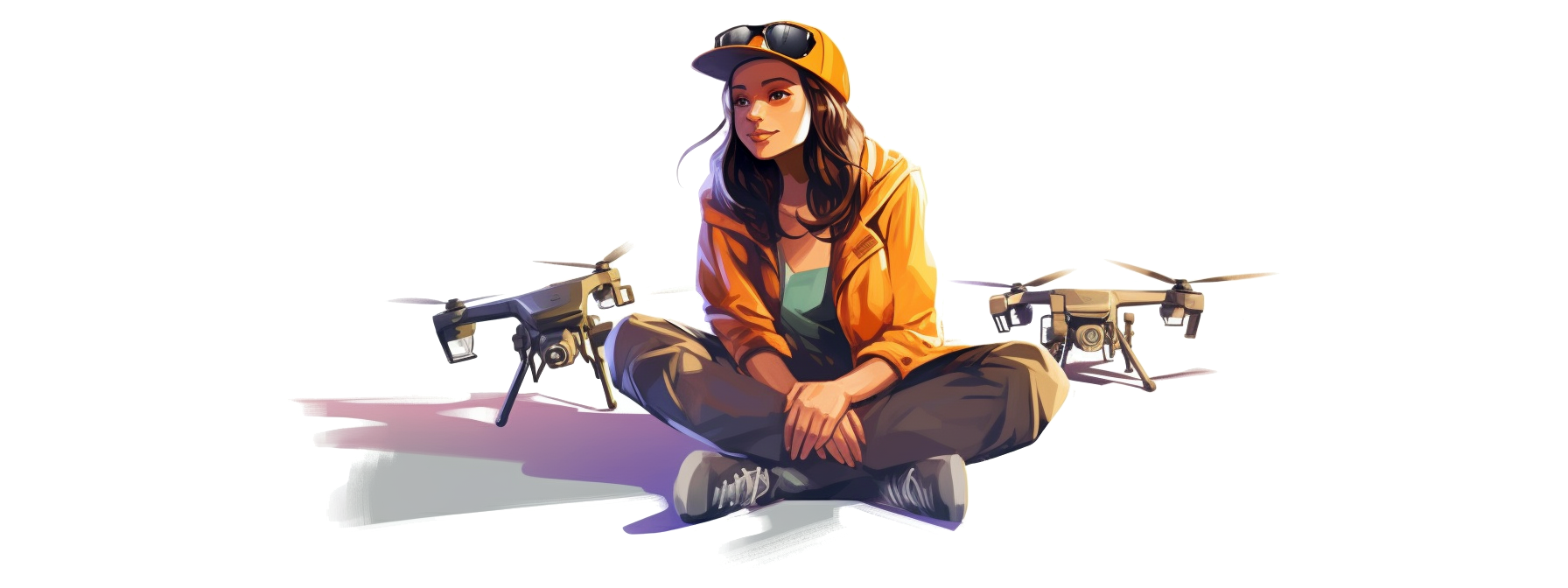
Drones, like many technologies, come in different levels of difficulty: from those designed for beginners who are just getting a feel for the controls, to advanced models that require a thorough understanding of aerodynamics, weather patterns, and even regulatory laws. In this section, we’ll explore the usability of drones in three categories: beginner, intermediate, and advanced.
Beginner Drones
As a rule of thumb, entry-level drones are designed to be as user-friendly as possible. These models often include features such as:
- For instance, the Ryze Tello, an excellent beginner drone, can take off from your hand and land with a single button press.
- This feature allows the drone to maintain a steady height without any input from the pilot.
- This control method simplifies the steering of the drone, making it a great feature for novices.
- These provide protection for the drone (and everything around it), making those inevitable first-crash anxieties a little less stressful.
- Most beginner drones have a range of up to 100 meters and a top speed of around 20 km/h, making them easier to control.
Intermediate Drones
Intermediate drones strike a balance between ease of use and advanced features. They’re designed for pilots who have mastered the basics and are ready for a bigger challenge. Features often include:
- For example, the DJI Mini 2 offers features like follow me, waypoint navigation, and circle around an object.
- With resolutions of up to 4K, these drones can capture high-quality photos and videos.
- These drones often provide up to 30 minutes of flight time and a range of 5 to 8 kilometers.
- Intermediate drones often reach speeds up to 50 km/h.
Advanced Drones
Advanced drones are designed for experienced pilots and are often used for professional purposes such as aerial photography, 3D mapping, and inspections. Advanced drones typically feature:
- The DJI Phantom 4 Pro, for example, comes equipped with a 1-inch 20-megapixel sensor capable of shooting 4K/60fps video.
- These drones have sensors to detect and avoid obstacles in their flight path.
- Some can be controlled at ranges of up to 8 kilometers.
- Advanced drones can reach speeds over 70 km/h.
- These include waypoint navigation, orbit mode, and active track.
Choosing a drone that matches your skill level is critical for a rewarding flying experience. Remember, the journey to becoming an experienced drone pilot is a progressive one. Start with a beginner model, master the controls, understand the mechanics, and then gradually move up to more advanced models.
Safety Features: Obstacle Detection and Avoidance, Return Home Function, etc.
As drones become more popular and their capabilities continue to advance, so too has the focus on safety features. Today’s drones are equipped with a number of safety features designed to protect the drone, the pilot, and the public. In this section, we’ll examine some of the most important safety features to consider when buying a drone.
Obstacle Detection and Avoidance
Obstacle detection and avoidance technology is an important safety feature found on more advanced drones. This system uses sensors (typically ultrasonic, infrared, or optical cameras) to detect and avoid obstacles in the drone’s flight path. For example, the DJI Mavic 2 Pro uses its advanced sensor system to map the environment around it in 3D, allowing it to avoid obstacles up to 20 meters away, even at high speeds of 44 mph (72 km/h).
Return Home Function
The Return Home function (sometimes referred to as “Return-to-Home” or RTH) is an important safety feature that ensures your drone will return to its launch point if the control signal is lost or the battery is low. Drones like the Autel EVO II have an RTH feature that uses GPS to automatically fly the drone back to its launch location. This can be a lifesaver if you lose sight of your drone or encounter unexpected problems during flight.
Geofencing
Geofencing is a feature that uses GPS or radio frequency identification (RFID) to create a virtual geographic boundary. This boundary limits where the drone can fly, often preventing it from entering restricted airspace such as airports, military bases or national parks. For example, the Yuneec Typhoon H Pro has a built-in no-fly zone feature that prevents the drone from entering FAA restricted airspace.
Fail-safe Functions
Fail-safe features are designed to take control if something goes wrong. These can include auto-hover or auto-land features that kick in if the drone loses connection with the controller or if the battery is critically low. For example, the Parrot Anafi has a fail-safe feature that causes it to automatically return home and land when the battery reaches a critically low level.
Propeller Guards
Propeller guards are physical barriers that protect the drone’s propellers from impact damage. While often thought of as a feature for beginner drones, they can be beneficial for all levels of users by providing additional protection for the drone and safety for people or property nearby. For example, the DJI Spark comes with optional propeller guards that can be attached for safer indoor flying.
In conclusion, safety features should be a top priority when choosing a drone. Not only do they protect your investment, but they also make flying a more enjoyable and worry-free experience. So whether you’re a beginner pilot or a seasoned pro, be sure to check out these safety features when making your next drone purchase.
Top Drone Models for Each Category
Choosing the right drone often depends on your specific needs, whether it’s having fun flying around your backyard, capturing stunning aerial footage, or even racing at high speeds. Let’s take a look at the top models in each category to help you make an informed decision.
Mini Drones / Nano Drones
When it comes to mini drones, the Ryze Tello, powered by DJI technology, stands out from the crowd. This compact drone weighs just 80 grams and has a 13-minute flight time, which is impressive for its size. It’s perfect for indoor flying and can perform various stunts, making it an excellent choice for beginners and younger users.
Hobby Drones
The DJI Mavic Mini is a great hobby drone. It’s lightweight, portable, and has a high-quality camera capable of shooting 2.7K HD video. With 30 minutes of flight time and a range of up to 4 km, the Mavic Mini is a solid choice for hobbyists.
Selfie Drones
When it comes to selfie drones, the DJI Spark shines with its Gesture Mode, which allows you to control the drone with simple hand motions. Its compact design, combined with a 2-axis gimbal and 12MP camera, makes it the perfect travel companion.
FPV / Racing Drones
The Arris X-Speed 280 V2 is a top contender in the FPV/racing drone category. It’s built for speed, with a powerful 1806 2280KV brushless motor that allows it to reach impressive speeds. With a rugged carbon fiber frame, this drone is ready for the rigors of high-speed racing.
Professional Camera Drones
The DJI Phantom 4 Pro V2.0 is a professional camera drone. With a 1-inch 20MP sensor capable of shooting 4K/60fps video and 14fps burst mode stills, this drone is a top choice for serious photographers and videographers. Its 5-direction obstacle detection and 4-direction obstacle avoidance make it safer to fly, even in challenging environments.
Advanced Technology Drones
If you’re looking for advanced drone technology, consider the Autel Robotics EVO II. With 8K video capability, 40 minutes of flight time and a range of up to 9 km, it’s one of the most advanced consumer drones available. Its Dynamic Track 2.0 feature allows it to precisely track subjects and predict their movements, ensuring smooth and steady footage.
Each of these drones stands out in its category, but remember to consider your specific needs, budget, and skill level before making a decision. With the right drone, you’ll be able to explore the skies, capture stunning footage, or simply have fun in ways you never imagined.
Pros and Cons of Owning a Drone
Drones have taken the world by storm, offering a new perspective on the world around us. Whether you’re a hobbyist, professional photographer, or tech enthusiast, drones can bring immense value. But like any piece of technology, they come with their own set of pros and cons. Let’s explore these to give you a clearer picture.
Pros
1. A New Perspective
Drones, especially those equipped with high-quality cameras, offer a whole new way to see the world. With a drone, you can capture stunning aerial photos and videos that were once the exclusive domain of professionals with access to helicopters or airplanes.
2. Accessibility and Ease of Use
Modern drones are incredibly easy to use. Many models, like the DJI Mini 2, offer intuitive controls, automated flight modes, and comprehensive tutorials to help beginners get started.
3. Versatility
Drones are incredibly versatile machines. They can be used for everything from aerial photography and videography, real estate marketing, and event coverage to drone racing, agricultural surveys, and even search and rescue.
4. Technological Advancements
Drones are on the cutting edge of technology. Features such as GPS, obstacle detection and avoidance, return home capabilities, and advanced camera technology provide users with a safe, reliable, and powerful tool.
Cons
1. Privacy Concerns
One of the biggest concerns about drone use is privacy. Drones equipped with cameras can potentially invade people’s privacy if misused, which could have legal ramifications.
2. Safety Risks
Despite built-in safety features, drones can still pose a risk if flown irresponsibly. Collisions with obstacles, people, or even other aircraft can result in property damage or injury.
3. Legal Restrictions
As the popularity of drones has grown, so have the legal restrictions. Many countries have enacted drone laws that limit where and how drones can be flown. For example, flying near airports or above certain altitudes may be prohibited.
4. Noise
Drones, especially larger ones, can be quite noisy, which can disturb wildlife or people nearby.
5. Battery Life
One of the current limitations of drones is their relatively short flight time. Even high-end models like the DJI Mavic Air 2, with a maximum flight time of 34 minutes, can leave you wishing you had more time in the air.
Ultimately, the decision to own a drone is a matter of weighing these pros and cons against your particular needs and interests. Understanding these factors will help you make the right choice and get the most out of your drone flying experience.
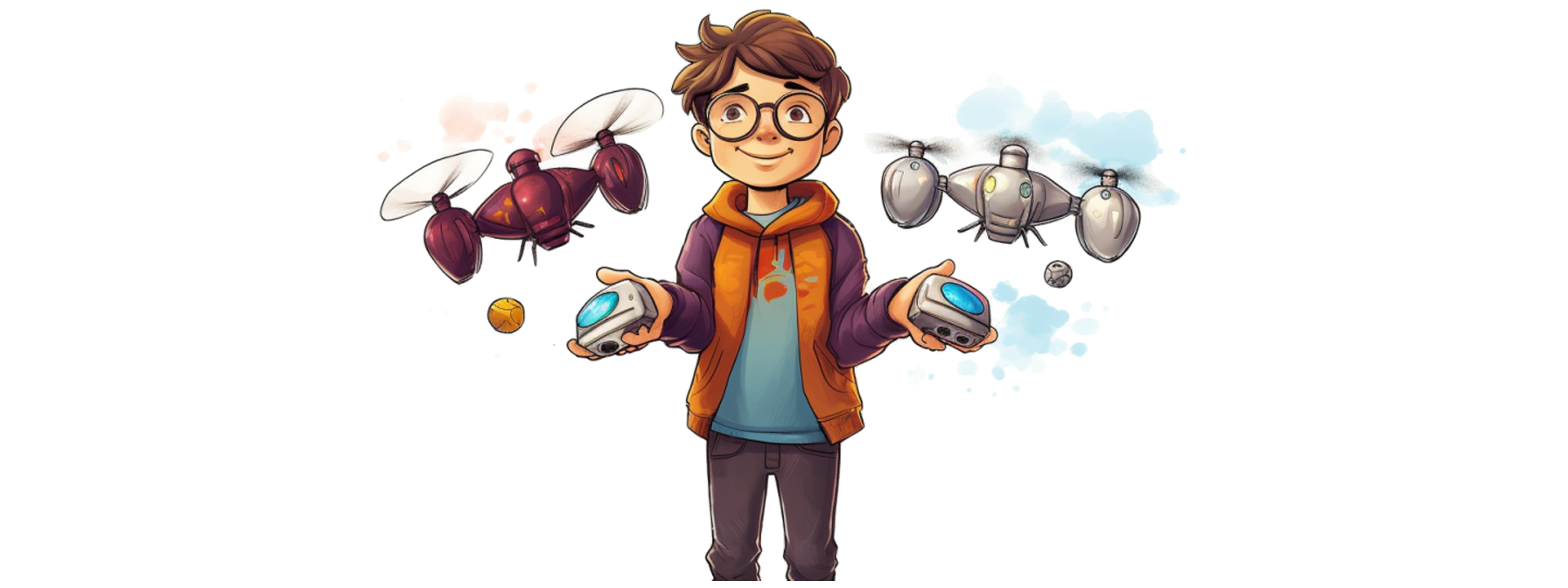
Price Comparison: Finding the Best Drone for Your Budget
Drone prices can vary dramatically, from the affordable to the incredibly high-end. To give you a better idea of what you can expect to get for your money, we’ve broken down some popular models into different price ranges. Whether you’re on a budget or ready to splurge, there’s a drone out there for you.
Entry-Level Drones (Under $100)
These are typically smaller drones, often referred to as mini or nano drones. They’re great for beginners who want to learn the basics of flying drones without making a big investment. They usually lack advanced features and have limited flight time and range, but they’re a great starting point.
- //www.dronemeaning.com/dji-1968169-179273-ryze-tech-tello-edu-quadricottero-rtf/”>Ryze Tello: Developed in partnership with DJI, the Ryze Tello is the perfect beginner’s drone. It offers a 13-minute flight time, a 100-meter range, and a 5-megapixel camera for basic photo and video capture. Expect to pay around $99.
Mid-Range Drones ($100 – $500)
This price range offers a balance between affordability and functionality. These drones often come with more advanced features such as higher quality cameras and improved flight stability.
- //www.dronemeaning.com/dji-mini-2-se-camera-drone-quadcopter-fly-more-combo-with-rc-n1-remote-controller-with-2-7k-video-extended-protection-bundle-with-deco-gear-backpack-landing-pad-accessories-kit/”>DJI Mini 2: At around $449, the DJI Mini 2 offers a lot for its price. It has a 31-minute flight time, a range of up to 10 km, and a 12-megapixel camera capable of 4K video.
High-End Drones ($500 – $1,000)
High-end drones are generally aimed at enthusiasts and professionals. They come equipped with top-of-the-line cameras and offer impressive flight times and ranges.
- //www.dronemeaning.com/dji-mavic-air-2-fly-more-combo-drone-quadcopter-uav-with-48mp-camera-4k-video-8k-hyperlapse-1-2-cmos-sensor-3-axis-gimbal-34min-flight-time-activetrack-3-0-ocusync-2-0-gray/”>DJI Mavic Air 2: For about $799, the DJI Mavic Air 2 offers a 34-minute flight time, a 10-kilometer range, and a 48-megapixel camera capable of shooting 4K video at 60 frames per second.
Professional Drones (Over $1,000)
These are the crème de la crème of consumer drones, often used by professional photographers and videographers. They come with advanced camera systems, long flight times and long ranges.
- Starting at $3,299 (without camera), the Inspire 2 is a professional-grade drone. It offers up to 27 minutes of flight time, a 7 km range, and compatibility with high-end camera systems like the Zenmuse X5S and X7.
Remember, the right drone for you depends on your needs, your skill level, and, of course, your budget. Take the time to evaluate what you want from a drone, and then find a model that offers those features within your price range. This guide should serve as a starting point to help you make an informed decision.
User Reviews and Experiences: The Voice of the Drone Community
When it comes to buying a drone, nothing beats hearing directly from those who’ve flown it. User reviews and experiences can provide invaluable insight into a drone’s performance, reliability, and ease of use. They can alert you to potential problems that you might not otherwise consider. In this section, we’ll highlight some key takeaways from user reviews for different categories of drones.
Mini/Nano Drones
Mini and nano drones like the Ryze Tello and Holy Stone HS170 tend to get high marks for fun and portability. Users appreciate their compact size and ease of use, making them ideal for beginners. However, some users note that these drones can struggle in windy conditions due to their light weight.
Hobby Drones
Hobbyist drones like the DJI Mini 2 and Parrot Anafi are praised for their balance of affordability, performance and features. Users often cite image quality and flight stability as standout features. However, some users express frustration with software bugs and occasional connectivity issues.
Selfie Drones
Selfie drones like the DJI Spark and Yuneec Breeze are popular for their compact design and ease of use. Users enjoy the gesture controls and automatic flight modes designed for taking selfies and group shots. However, some users report limited flight times and range.
FPV/Racing Drones
Racing drones like the Arris X-Speed 280 and Walkera F210 excite users with their high speed and agility. Pilots love the immersive experience that FPV goggles provide. However, these drones can be challenging for beginners, and users often mention the need for frequent repairs due to high-speed crashes.Racing drones like the Arris X-Speed 280 and Walkera F210 excite users with their high speed and agility. Pilots love the immersive experience that FPV goggles provide. However, these drones can be challenging for beginners, and users often mention the need for frequent repairs due to high-speed crashes.
Professional Camera Drones
Professional camera drones like the DJI Phantom 4 Pro and DJI Inspire 2 are getting rave reviews for their top-of-the-line camera systems and advanced features. Users praise their long flight times, long ranges, and professional image quality. However, the high cost of these drones can be a barrier for some users.
Remember, user reviews are a great resource, but they shouldn’t be the only factor in your decision-making process. Weigh them against other considerations like your budget, needs, and skill level to find the perfect drone for you. As the drone community often says, the best drone is the one that meets your specific needs and gives you the most joy in flight.
Registration Requirements: Understanding Your Obligations
In the world of drones, it’s not just about choosing the right drone, understanding the controls, and taking to the skies. There’s one essential aspect that every would-be drone pilot must consider – registration requirements.
FAA Registration in the United States
In the United States, the Federal Aviation Administration (FAA) requires that all drones weighing between 0.55 lbs (250 grams) and 55 lbs (25 kilograms) be registered. This requirement applies to both recreational and commercial drones.
For example, drones like the DJI Phantom 4 Pro, which weighs about 3 lbs (1.4 kg), certainly fall into this category. Even smaller drones, such as the DJI Mini 2, which weighs only 0.54 lbs (249 grams), can pass without registration.
The registration process is straightforward and involves providing your name, home address, and email address, along with a small fee. Once registered, you’ll receive a unique identification number that must be displayed on your drone.
Other Countries’ Regulations
Outside the United States, drone registration requirements may vary. In the United Kingdom, for example, the Civil Aviation Authority (CAA) requires registration for all drones weighing more than 250 grams or any drone, regardless of size, equipped with a camera.
In Australia, the Civil Aviation Safety Authority (CASA) also requires registration of drones used for anything other than recreational purposes (e.g., commercial, government, or educational purposes), regardless of weight.
Importance of Compliance
Registration is a legal requirement, and failure to comply can result in hefty fines and even criminal charges. More than just a bureaucratic process, registration helps authorities maintain safety standards and accountability among drone operators.
In conclusion, it’s important to familiarize yourself with the local laws and regulations regarding drones in your area. Drone ownership comes with responsibilities, and staying informed will help ensure that you can enjoy your flights without worrying about legal complications.
Rules for Flight: Height Restrictions, No-Fly Zones, and More
Navigating the skies with your drone can be an exhilarating experience. But like all great adventures, there are rules to follow to ensure a safe and legal flight. Understanding altitude restrictions, no-fly zones, and other regulations is critical for every drone pilot.
Altitude Restrictions
In the United States, the Federal Aviation Administration (FAA) has set a maximum altitude for drone flights of 400 feet (approximately 120 meters). This is to avoid potential interference with manned aircraft, which typically operate at higher altitudes.
In the United Kingdom, the Civil Aviation Authority (CAA) sets a similar altitude limit of 400 feet. However, this limit can be extended to 1,000 feet if the drone is flown within 400 feet of a structure taller than 400 feet.
No-Fly Zones
No-fly zones are areas where drone flights are prohibited due to safety or privacy concerns. They typically include areas around airports, military bases, and critical infrastructure.
Drones like the DJI Mavic 2 Pro, equipped with DJI’s GEO (Geospatial Environment Online) system, automatically provide pilots with real-time information about these zones. This feature helps pilots avoid inadvertently entering restricted airspace.
Other Flight Rules
In addition to altitude restrictions and no-fly zones, there are other rules that govern drone flight:
- Pilots should always keep their drones within visual line of sight. This means you must be able to see your drone at all times during flight.
- Unless granted a waiver, drone flights are only allowed during the day or civil twilight (30 minutes before official sunrise to 30 minutes after official sunset, local time).
- Drones must always yield the right of way to manned aircraft.
- Drones should not be flown in a manner that invades other people’s privacy or breaches data protection laws.
- Depending on your country and the purpose of your drone flight (commercial use, for example), having drone insurance might be mandatory.
Understanding and following these rules will not only ensure your compliance with the law, but will also contribute to the safety and enjoyment of the hobby for everyone. So as you take to the skies, remember that being a responsible drone pilot means not only mastering the controls, but also understanding the rules of the air.
Privacy Considerations
In the age of drones and advanced aerial technology, privacy has become an important issue. As fun and fascinating as drones can be, their ability to fly high and capture images can potentially infringe on people’s privacy. Here, we’ll look at the most important privacy considerations you should be aware of when operating a drone.
Legal Boundaries
Many jurisdictions have enacted laws to protect people’s privacy from potential drone intrusions. In the United States, for example, many states have their own specific privacy laws related to drone use. These laws generally prohibit drone operators from capturing images or video of people in situations where they have a reasonable expectation of privacy, such as in their own homes.
In the European Union, the General Data Protection Regulation (GDPR) also applies to drones. Under the GDPR, if your drone captures personal data (which can include video footage), you must comply with various obligations, such as ensuring that the data is processed lawfully, transparently, and for a specific purpose.
Ethical Guidelines
Even in areas without specific drone privacy laws, following ethical guidelines is critical. Here are some key points to keep in mind:
- This is not just a matter of privacy, but also of respect. If you wouldn’t like someone doing it to you, don’t do it to others.
- If you’re capturing footage in a public place where people might be present, try to avoid filming individuals directly, especially without their consent.
- Drones, especially larger models like the DJI Phantom 4 Pro V2.0, can be quite noisy and disruptive. Always consider the impact of your drone’s noise on others.
Tech-Based Privacy Solutions
Several drone manufacturers are incorporating privacy features into their products to ensure compliance with privacy standards. For example, some drones now come with a “privacy mode” that prevents the transmission of video feeds to the Internet during flight.
Another key feature is geo-fencing, which can be programmed to prevent drones from flying in certain areas, such as over private property or sensitive locations. Drone models like the Yuneec Typhoon H Pro come with built-in geo-fencing technology, which can be a great asset for privacy-conscious pilots.
Navigating the fine line between drone use and privacy can be challenging. But with an understanding of legal boundaries, ethical guidelines, and the right technology, it’s entirely possible to enjoy flying drones while respecting the privacy of others. Remember, responsible drone use is the key to keeping this fantastic hobby accessible and enjoyable for everyone.
How to Care for Your Drone
Owning a drone is an exciting adventure filled with thrilling flights and incredible aerial photography opportunities. However, maintaining the condition and functionality of your drone is just as important as exploring the open skies. Here’s how to take care of your drone to ensure a long and productive life.
Regular Inspection
It’s important to thoroughly inspect your drone before and after every flight. Look for signs of wear and tear, especially on the propellers, motors, and body of the drone. With drones like the DJI Mavic Air 2, which has a flight time of 34 minutes and a maximum speed of 68.4 km/h, even minor damage can result in significant performance loss or safety risks.
Battery Care
Drones are powered by lithium-polymer (LiPo) batteries, which require special care to maintain their performance and longevity. Always store your batteries in a cool, dry place and never charge them unattended. Also, avoid overcharging or completely discharging your batteries. For example, the LiPo battery in the Autel Robotics EVO II drone, which provides 40 minutes of flight time, should ideally be charged to 80% for storage and recharged as soon as it drops below 20% during operation.
Cleanliness
Keeping your drone clean is important. Dust, dirt, and other particles can get into the drone’s components and affect performance. Use a soft brush or compressed air to clean the motors and remove debris from the drone body. Special cleaning solutions are available for drones, but a lightly moistened cloth can also work for the non-electronic parts.
Firmware Updates
Firmware updates are not just about adding new features. They also often include bug fixes and improvements to your drone’s performance and stability. Check your drone manufacturer’s website regularly for updates. Most drone models, including the Parrot Anafi, offer easy-to-follow procedures for firmware updates.
Storage and Transport
When not in use, store your drone in a cool, dry place out of direct sunlight. Transport your drone in a sturdy, padded case designed to protect it from physical damage. For example, the DJI Mini 2 weighs only 249 grams and can easily be damaged during transportation without a proper case.
Drone Calibration
Regular calibration of your drone’s compass, gimbal, and IMU is essential for safe and stable flight. Follow your drone manufacturer’s guidelines for calibration procedures. Remember to always calibrate your drone in an open area, away from potential sources of electromagnetic interference.
Maintaining your drone is an investment in its longevity and performance. With regular inspections, proper battery care, cleanliness, firmware updates, safe storage, and routine calibrations, your drone will always be ready to soar and capture stunning aerial footage.
Tips for Prolonging Battery Life
The thrill of flying a drone can be short-lived if you’re constantly worried about running out of battery power mid-flight. Fortunately, there are several ways to extend your drone’s battery life and maximize your flight time. Here are a few tips to keep your drone flying longer.
Mind the Weather
Cold weather can have a significant impact on battery performance. In fact, a drone like the DJI Phantom 4 Pro V2.0 with a standard flight time of about 30 minutes can see a 10-20% reduction in extreme cold conditions. Try to fly your drone in mild weather to maintain optimal battery life.
Lighten the Load
The more weight your drone has to carry, the harder its motors have to work and the faster its battery will drain. Remove any unnecessary accessories or payloads. Remember, every gram counts, especially with lightweight drones like the DJI Mini 2, which weighs just 249 grams.
Lower the Brightness
The brightness of the controller screen can have a significant effect on the battery life of the controller. Reduce the brightness to a comfortable level to extend battery life. This is especially true for integrated controllers such as the Autel EVO Lite+, which has an ultra-bright 7.9-inch built-in display.
Reduce the Use of Advanced Features
Advanced features such as obstacle avoidance, tracking, or high-resolution video recording can drain the battery faster. Use these features sparingly if you plan to fly for a long time.
Plan Your Flight Path
A well-planned flight path can reduce the amount of time your drone spends in the air. Plan your routes and shots ahead of time to maximize efficiency and battery life.
Regularly Update Firmware
Drone manufacturers often release firmware updates that improve battery performance, among other things. Make sure your drone’s firmware is always up to date.
Proper Battery Maintenance
Proper battery care goes a long way toward extending battery life. Avoid overcharging and completely draining your battery. It is recommended that you keep your batteries between 20% and 80% for optimal longevity. Also, store your batteries in a cool, dry place when not in use.
Adjust the Drone Settings
Most drones allow you to adjust settings to maximize battery life. This can include reducing the maximum speed, turning off the LED lights, or lowering the video resolution.
By following these tips, you can squeeze every possible minute of flight time out of your drone’s battery. That way, you can focus more on capturing stunning aerial footage and less on the dwindling battery icon.
How to Handle Repairs
In the world of drone flying, it’s not a question of if you’ll need repairs, but when. Even the most careful drone pilots will encounter a mishap now and then. But with the right knowledge and resources, you can turn a potential disaster into a manageable situation. Here’s how to handle repairs and keep your drone in top flying condition.
Know Your Drone Inside Out
Before you start repairing your drone, take the time to familiarize yourself with the inner workings of your drone. Each drone model, whether it is the DJI Mavic 2 Pro or the Yuneec Typhoon H Pro, has its own unique design and parts. Check your drone’s manual, which often includes a comprehensive breakdown of parts and components.
Assess the Damage
If your drone has fallen, it’s important to thoroughly inspect the damage. Look for any visible signs of damage, such as cracked propellers, dented fuselage, or loose wires. Pay particular attention to the drone’s camera, motors, and battery compartment, which are critical to its operation.
DIY or Professional Repair?
The next step is to decide whether to do a DIY repair or seek professional help. Simple repairs like replacing propellers or tightening loose screws can usually be done at home with a drone repair kit. However, for more complex issues such as a damaged camera or malfunctioning GPS, it may be wise to contact a professional drone repair service.
Gather the Necessary Tools
If you decide to do a DIY repair, make sure you have the right tools. Basic drone repair tools include a set of precision screwdrivers, tweezers, and a soldering iron. You may also need specific parts, such as replacement propellers or a new battery, which can usually be purchased online or from a drone retailer.
Follow Online Tutorials
There is a wealth of knowledge available online to guide you through your drone repairs. Sites like iFixit have step-by-step guides for common repairs on popular drone models. YouTube also has a wealth of drone repair tutorials.There is a wealth of knowledge available online to guide you through your drone repairs. Sites like iFixit have step-by-step guides for common repairs on popular drone models. YouTube also has a wealth of drone repair tutorials.
Test Your Repairs
Once you’ve completed the repairs, it’s time to test your drone. Start with a basic function check to make sure everything is working properly. Then take a short, controlled flight to see if any more adjustments are needed.
Consider Drone Insurance
If you frequently need drone repairs, you may want to consider drone insurance. Some companies offer coverage for damage and repairs, providing peace of mind and potentially saving you money in the long run.
Keep in mind that regular maintenance and careful handling can prevent many common drone damages. However, when accidents do happen, being prepared and knowing how to handle repairs can get your drone back in the sky in no time.
Emerging Trends in Drone Technology
As we soar into the future, drone technology continues to evolve at a breathtaking pace. In this article, we’ll explore some of the most exciting emerging trends in drone technology that will redefine our skies.
Enhanced Connectivity: 5G Drones
One of the most significant advancements in drone technology is the integration of 5G connectivity. This leap in communications technology allows for real-time data transmission at breakneck speeds. It also enables drones to perform more complex tasks, from detailed inspections to advanced delivery services, with greater reliability and efficiency.
Artificial Intelligence and Machine Learning
Artificial intelligence (AI) and machine learning (ML) are making drones smarter, more autonomous and more capable than ever before. Skydio 2, for example, uses AI for advanced obstacle avoidance and autonomous navigation, allowing it to follow objects through complex environments with ease.
Drone Swarms
Drone swarms, or multiple drones working in concert, are becoming a reality. These swarms can perform tasks faster and more efficiently, from search and rescue operations to data collection over large areas. An excellent example is the Intel Shooting Star drone, which creates stunning light shows in the night sky.
Enhanced Payload Capacity
Drones with increased payload capacity are on the rise. These heavy-lift drones can carry larger payloads, making them ideal for applications ranging from delivering medical supplies in emergency situations to aerial filming with professional-grade cameras.
Green Drones
As environmental concerns grow, we’re seeing the emergence of green drone technology. This includes drones powered by renewable energy sources such as solar power, like the Alta Devices Solar Drone, and drones made with biodegradable materials.
Advanced Imaging Technologies
Advanced imaging technologies are becoming standard in drone technology. These include thermal imaging for nighttime operations, multispectral sensors for precision agriculture, and LIDAR technology for detailed 3D mapping.
Beyond Visual Line of Sight (BVLOS) Operations
Regulations are slowly evolving to allow Beyond Visual Line of Sight (BVLOS) operations, which will dramatically increase the efficiency and utility of drones. This will allow drones to operate over greater distances, paving the way for applications such as long-range inspections, surveillance and deliveries.
The future of drone technology is bright, with new trends and innovations emerging every day. As a drone enthusiast or potential drone owner, it’s an exciting time to be involved in this dynamic field. These emerging trends will not only change the way we use drones, but also open up new possibilities for what drones can do.
Predicted Advancements in Drone Technology
As we look to the horizon of drone technology, it’s clear that the future holds a number of intriguing possibilities. Here are some of the anticipated advancements that could shape the next wave of innovation in the drone industry.
More Autonomous Drones
Drones will become even more autonomous. The evolution of AI and machine learning will allow drones to learn from their surroundings, adapt to changes, and make decisions with minimal human intervention. The DJI Phantom 5, with its rumored autonomous features, is an example of the exciting possibilities.
Integration with IoT
The Internet of Things (IoT) is expected to play a critical role in the future of drone technology. IoT-enabled drones can communicate with other devices and systems, improving the efficiency of data collection, analysis, and reporting. This integration could revolutionize sectors such as agriculture, infrastructure inspection, and environmental monitoring.
Advanced Delivery Systems
The use of drones for delivery is about to take off. Companies like Amazon and Google are already experimenting with drone delivery systems. In the future, we can expect drones to deliver everything from packages to medical supplies with greater speed and efficiency.
Increased Endurance
With advances in battery technology and energy-efficient design, drones will be able to fly longer and cover greater distances. Long-endurance drones will be particularly useful for tasks such as surveillance, search and rescue, and aerial mapping.
Indoor Navigation
Future drones are likely to have advanced indoor navigation capabilities. This will include sophisticated obstacle detection and avoidance systems, making drones safer and more effective for indoor operations such as inventory management in warehouses or inspection tasks.
Noise Reduction
The drones of the future will be much quieter. Engineers are working on innovative designs and materials to reduce the noise generated by drones. Quieter drones will be less intrusive, allowing them to operate in more environments.
Advanced Collision Avoidance
Future drones will have superior collision avoidance systems. With advances in sensor technology and AI, drones will be able to identify and avoid obstacles with unprecedented accuracy, increasing their safety and reliability.
Nano Drones
The future could see the rise of nanodrones. These tiny yet powerful drones could be used for a variety of applications, from spying and surveillance to pollinating crops by mimicking the natural behavior of bees.
In summary, the future of drone technology promises to be as exciting as it is unpredictable. With continued advancements, drones will become more integrated into our daily lives, reshaping industries and creating new opportunities.
Potential Future Applications of Drones
As we look into the crystal ball of drone technology, it’s clear that the applications of drones will expand far beyond their current uses. Whether it’s entertainment, security, or even agriculture, drones are poised to change the way we live and work. Let’s explore some of the most promising future applications of drone technology.
Advanced Delivery Systems
As we’ve mentioned before, drones have been trialed by companies like Amazon and Google for package delivery. In the future, these trials will become a mainstream reality. Drones could deliver everything from your latest online purchase to emergency medical supplies, making deliveries faster, more efficient, and reducing road traffic.
Wildlife Conservation
Drones have the potential to revolutionize wildlife conservation. With their ability to cover long distances and inaccessible areas, drones can be used to track, monitor, and study wildlife without disturbing their natural behavior. They can also play a critical role in anti-poaching efforts.
Disaster Management and Rescue Operations
Drones can be invaluable in disaster management and rescue operations. They can quickly search large areas for survivors, deliver supplies, and provide real-time data to help authorities make informed decisions. The DJI Matrice 300 RTK, for example, has a flight time of up to 55 minutes and a range of 15 km, making it an excellent choice for these tasks.
Agriculture and Farming
In agriculture, drones are being used for precision farming, crop monitoring and even crop dusting. They can collect detailed data on crop health, soil conditions, and irrigation to help farmers make better decisions and increase yields.
Atmospheric Research
Drones could also play an important role in atmospheric research. Scientists could use drones to collect data on atmospheric conditions, air quality, and weather patterns. This information can help predict weather changes more accurately and improve our understanding of climate change.
Construction and Infrastructure Inspection
Drones are becoming a common sight on construction sites and infrastructure projects. They can provide aerial surveys, monitor progress, and inspect structures such as bridges, towers, and wind turbines for damage, increasing safety and efficiency.
Entertainment and Media
From movie shoots to sports coverage, drones will continue to revolutionize the entertainment and media industries. Expect to see more drone light shows, like the ones popularized by Intel, and more stunning aerial cinematography in movies.
The potential future applications of drones are as vast as they are exciting. As drone technology evolves, these applications will become more refined, and entirely new uses are sure to emerge. Drones are not just flying machines; they are versatile tools that will shape the future in ways we can only begin to imagine.
Recap of Key Points
As we come to the end of this comprehensive guide, it’s important to circle back and summarize the key takeaways. In a world where drone technology is rapidly evolving, understanding these focal points will give you the knowledge you need to make an informed decision when purchasing a drone.
Understanding Your Needs
First and foremost, define your drone needs. Whether you’re an enthusiast looking for a drone for aerial photography or a professional in need of a high-end drone for surveying, knowing your requirements will guide your purchase decision.
Technical Specifications
Always pay close attention to the drone’s specifications. Key parameters like flight time, range, and payload capacity should meet your needs. Keep in mind that drones like the DJI Phantom 4 Pro V2.0 have a 30-minute flight time and a 7-kilometer range, making them excellent choices for professional use.
Safety Features
Drone safety features aren’t optional; they’re essential. Look for drones equipped with obstacle detection and avoidance systems, return home functions, and reliable GPS systems to ensure safe and reliable flights.
Price Comparison and User Reviews
Price doesn’t always mean quality. Compare prices across models and brands, and don’t overlook user reviews. Real-world experiences from other drone users can provide valuable insight into a drone’s performance and reliability.
Legal and Ethical Considerations
Don’t forget the legal and ethical aspects of drone use. Understand local drone registration requirements, flight rules, and privacy concerns when flying your drone.
Care and Maintenance
Drones are an investment, and like all investments, they require care and maintenance. Check your drone regularly for signs of damage, keep the batteries in good condition, and learn how to perform minor repairs to prolong the life of your drone.
Future Trends and Predictions
Stay informed about the latest trends and predicted advancements in drone technology. As the drone landscape evolves, being aware of these changes can help you better utilize your drone and adapt to new uses and applications.
Choosing the right drone is no small task. It requires a comprehensive understanding of your needs, thorough research, and careful consideration of various factors. By keeping these key points in mind, you’ll be well-equipped to navigate the busy drone market and find the perfect drone for your needs.
Encouragement for Responsible Drone Usage
As we close out our comprehensive Drone Buyer’s Guide, we want to emphasize the importance of responsible drone use. While drones offer an incredible blend of fun, utility, and opportunity, it’s critical that every drone operator understands their role in ensuring the safe and respectful use of this technology.
Be Aware and Respectful
Drone operators should be aware of their surroundings. Respect boundaries, both physical and personal. Flying over private property without permission or disturbing wildlife can lead to unwanted consequences and damage the reputation of the drone community. It’s not just about following the rules; it’s about being a good citizen of the skies.
Prioritize Safety
Your drone may be a technological marvel with state-of-the-art safety features like obstacle avoidance and auto-return, but that doesn’t mean you can ignore basic safety measures. Keep in mind that even drones like the DJI Mavic 2 Pro, with its 31-minute flight time and 8-km range, are still subject to unpredictable factors like weather changes and signal interference. Always keep your drone within your line of sight and avoid flying in bad weather.
Stay Informed
Staying abreast of the latest regulations and ethical considerations is an ongoing process. As drone technology evolves, so do the rules and guidelines surrounding its use. Stay abreast of changes in local and international drone laws to ensure you’re always on the right side of the law.
Educate Others
As an active member of the drone community, you have a responsibility to educate others about responsible drone use. Share your knowledge, help new drone pilots understand the basics, and encourage them to follow the rules. Together, we can ensure a safe and enjoyable future for drone technology.
In our journey through this guide, we’ve uncovered the vast and exciting world of drones, from understanding your unique needs, to comparing models and prices, to anticipating future trends. It’s clear that drones are much more than just gadgets; they’re a gateway to a new perspective, a tool for creativity, and an instrument for innovation.
As we soar into this promising future, it’s up to all of us to fly responsibly and harness the potential of drone technology in a way that is safe, respectful, and beneficial for all. Keep your propellers spinning, your cameras rolling, and let’s make the skies a better place, one drone flight at a time.
Happy flying, pilot!

